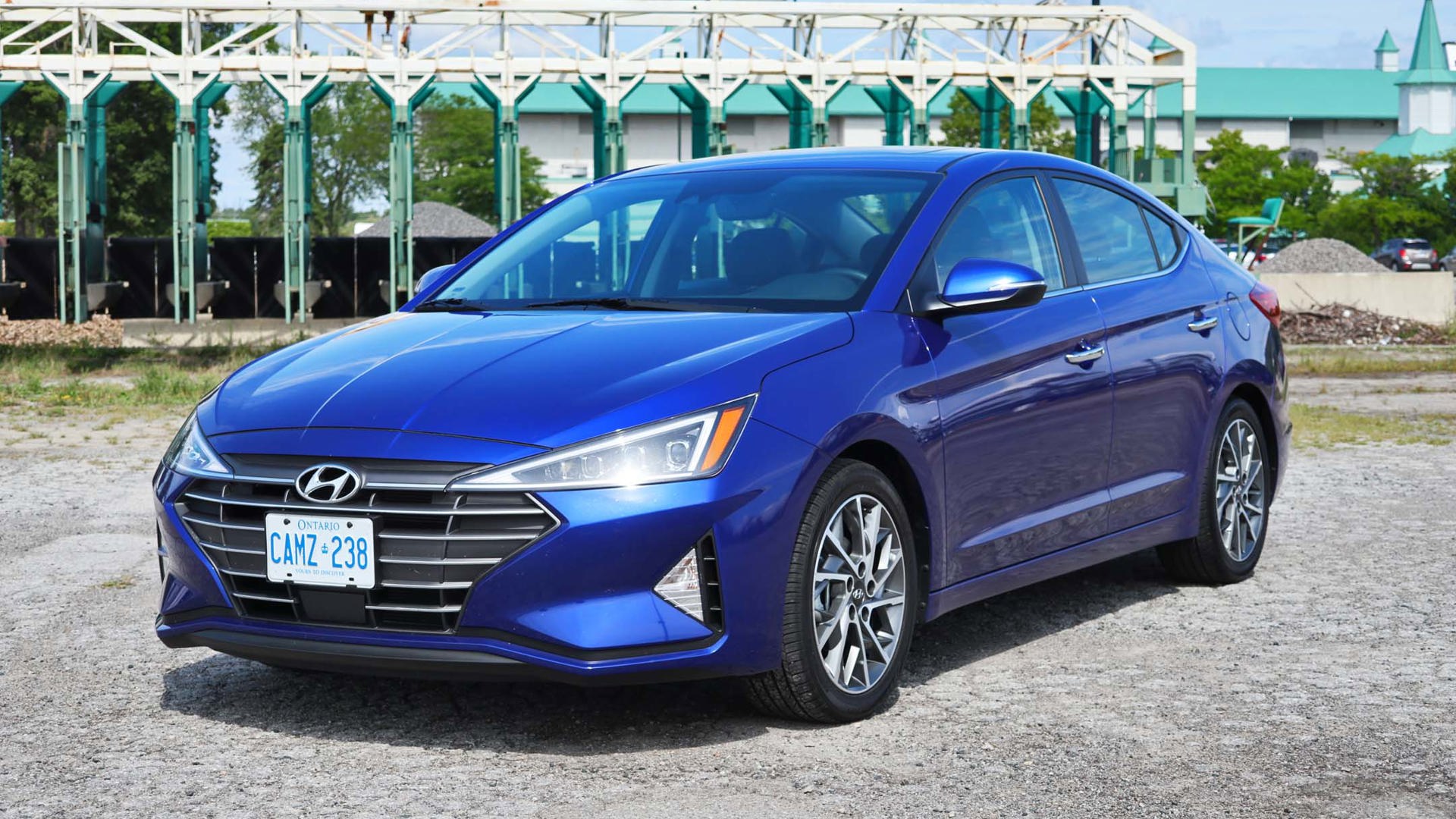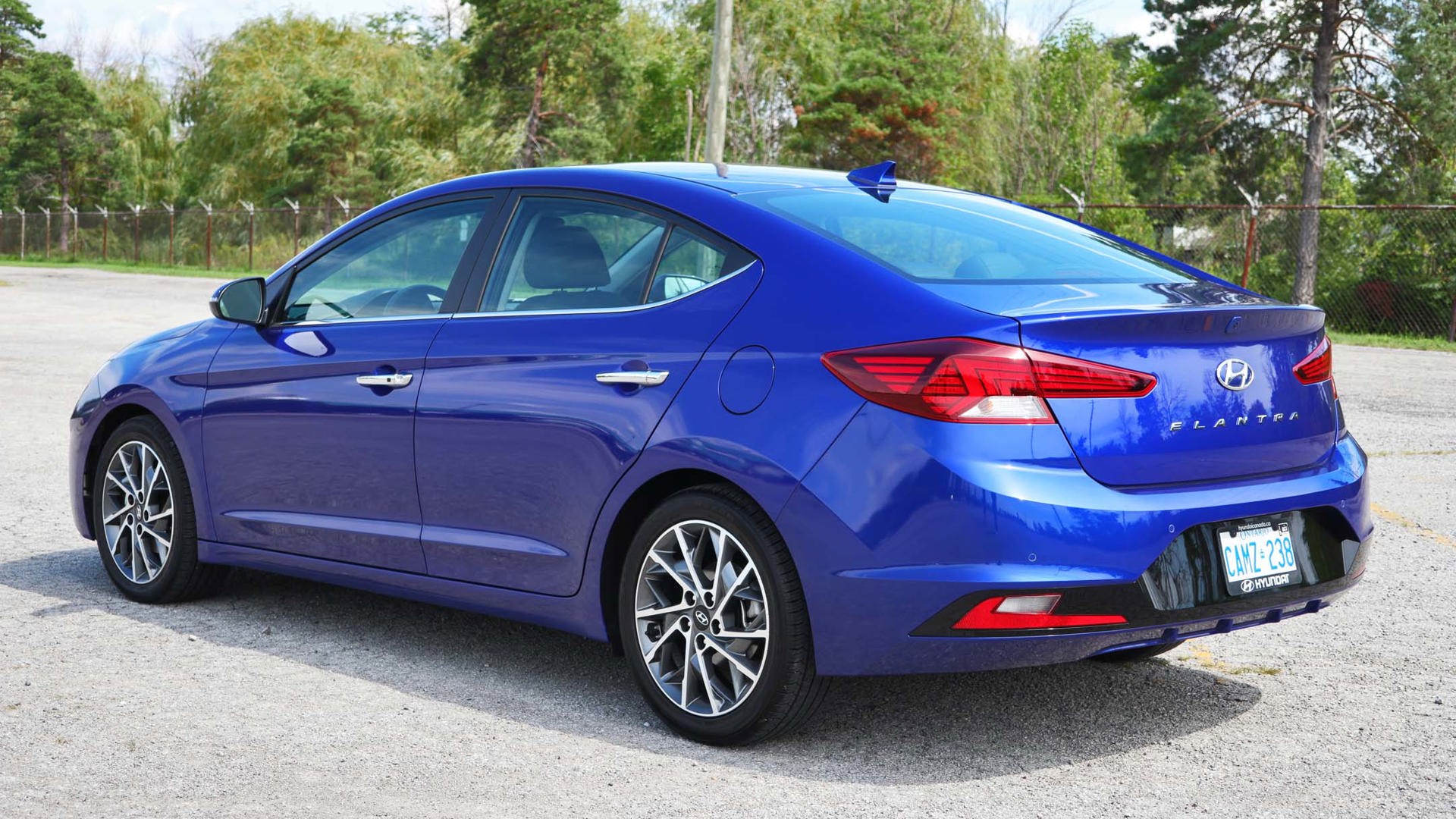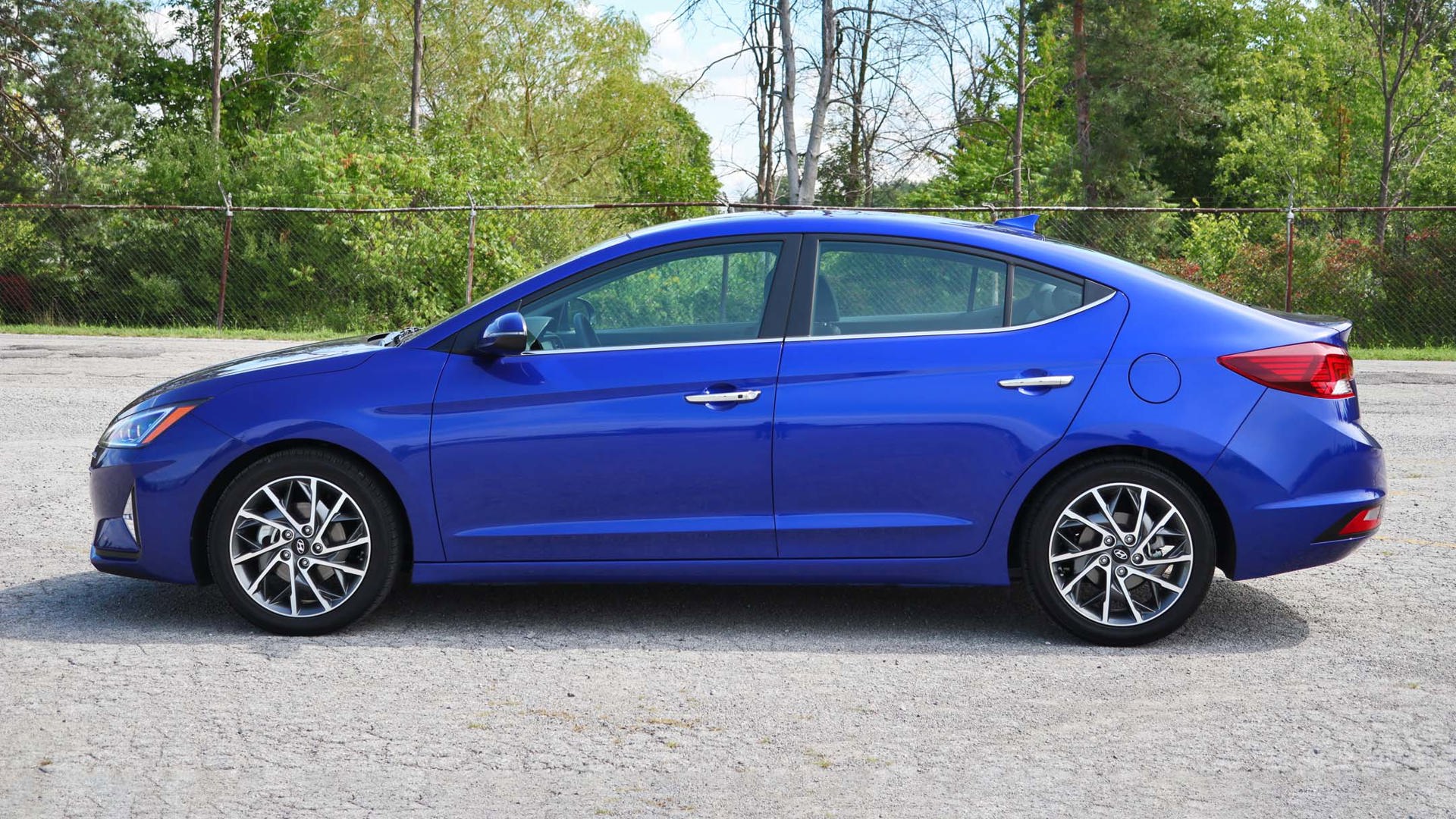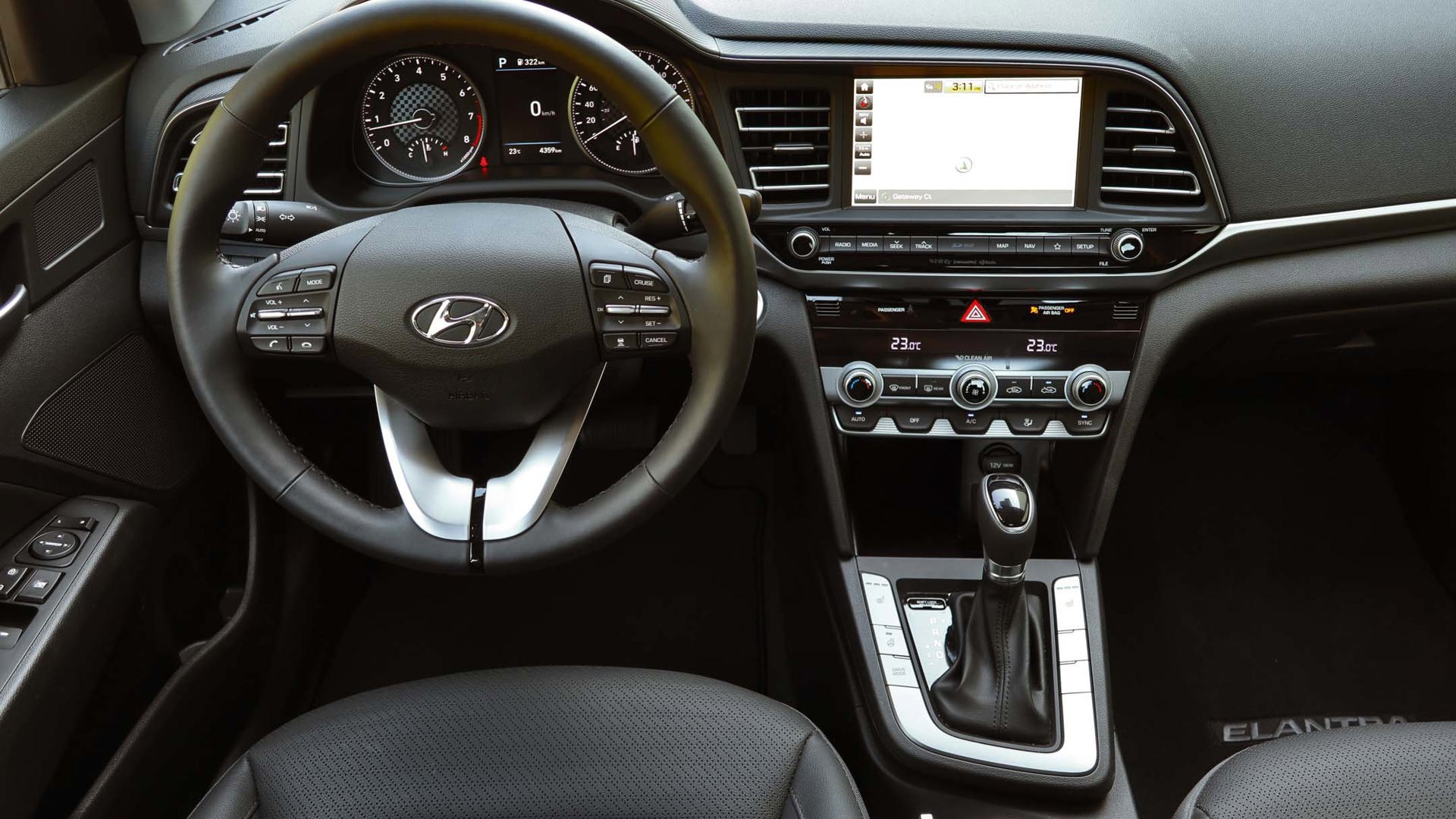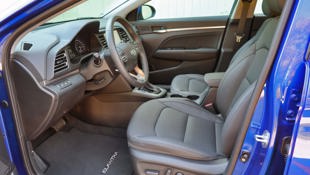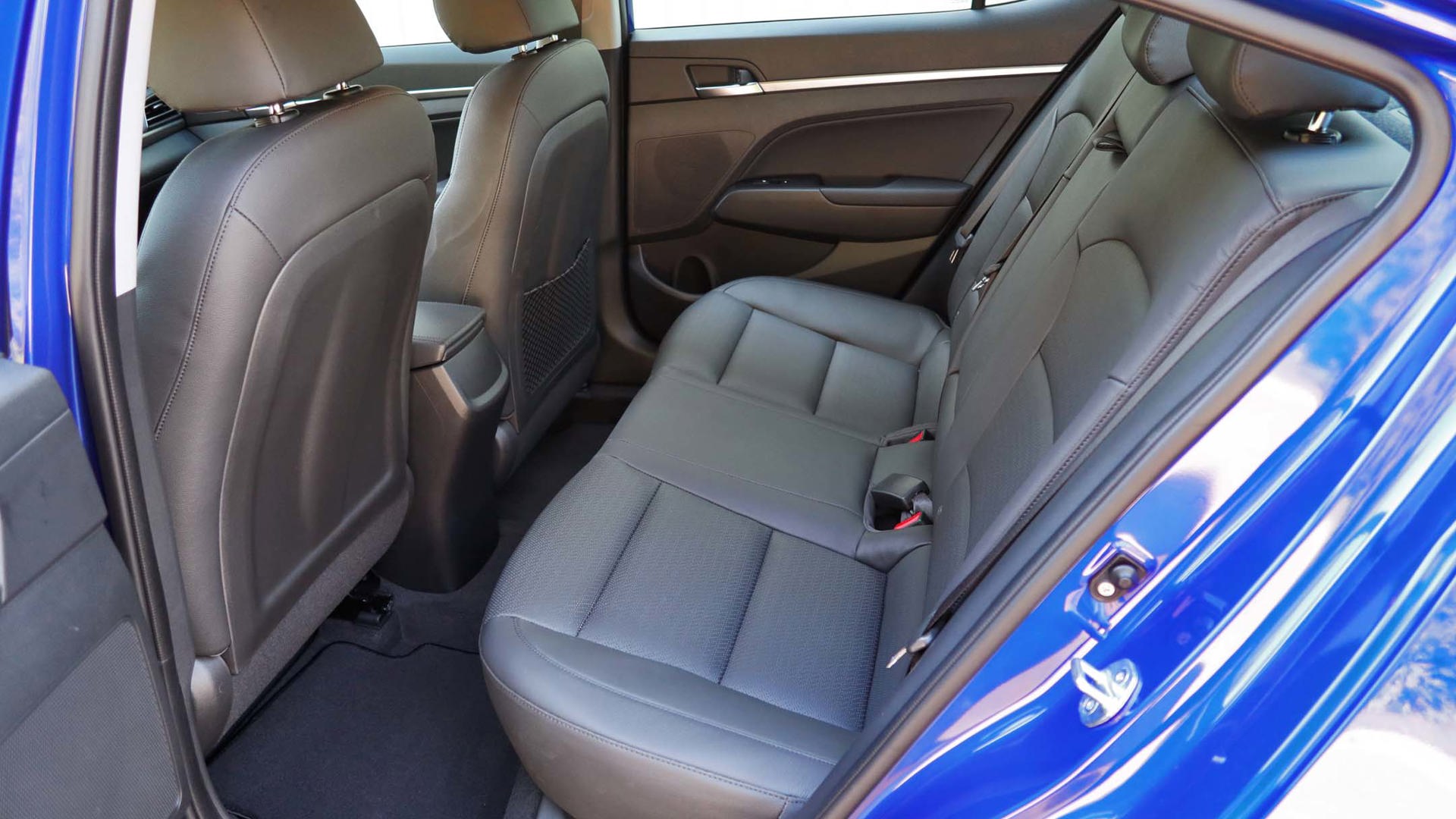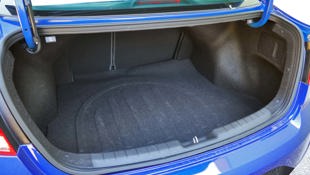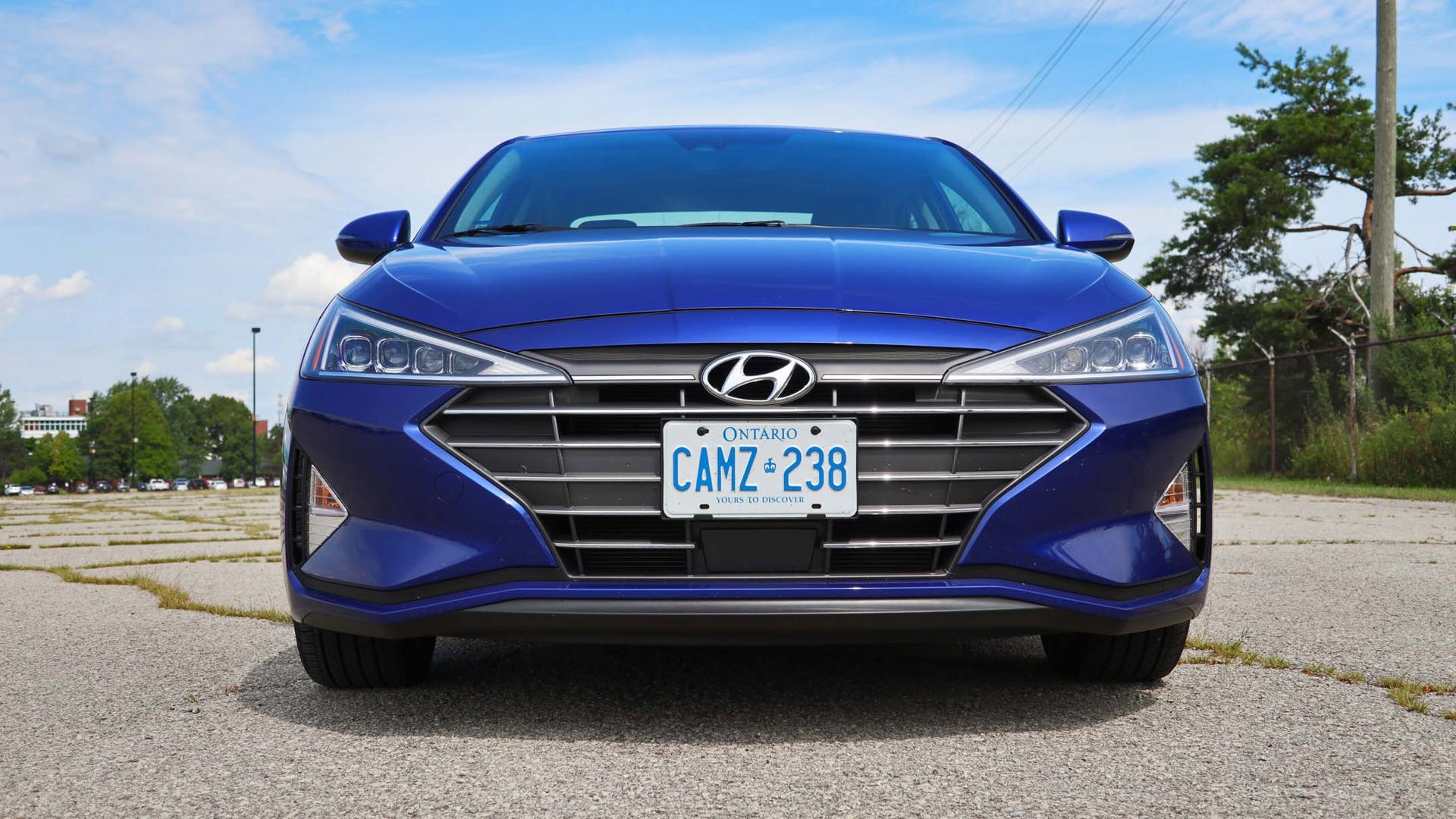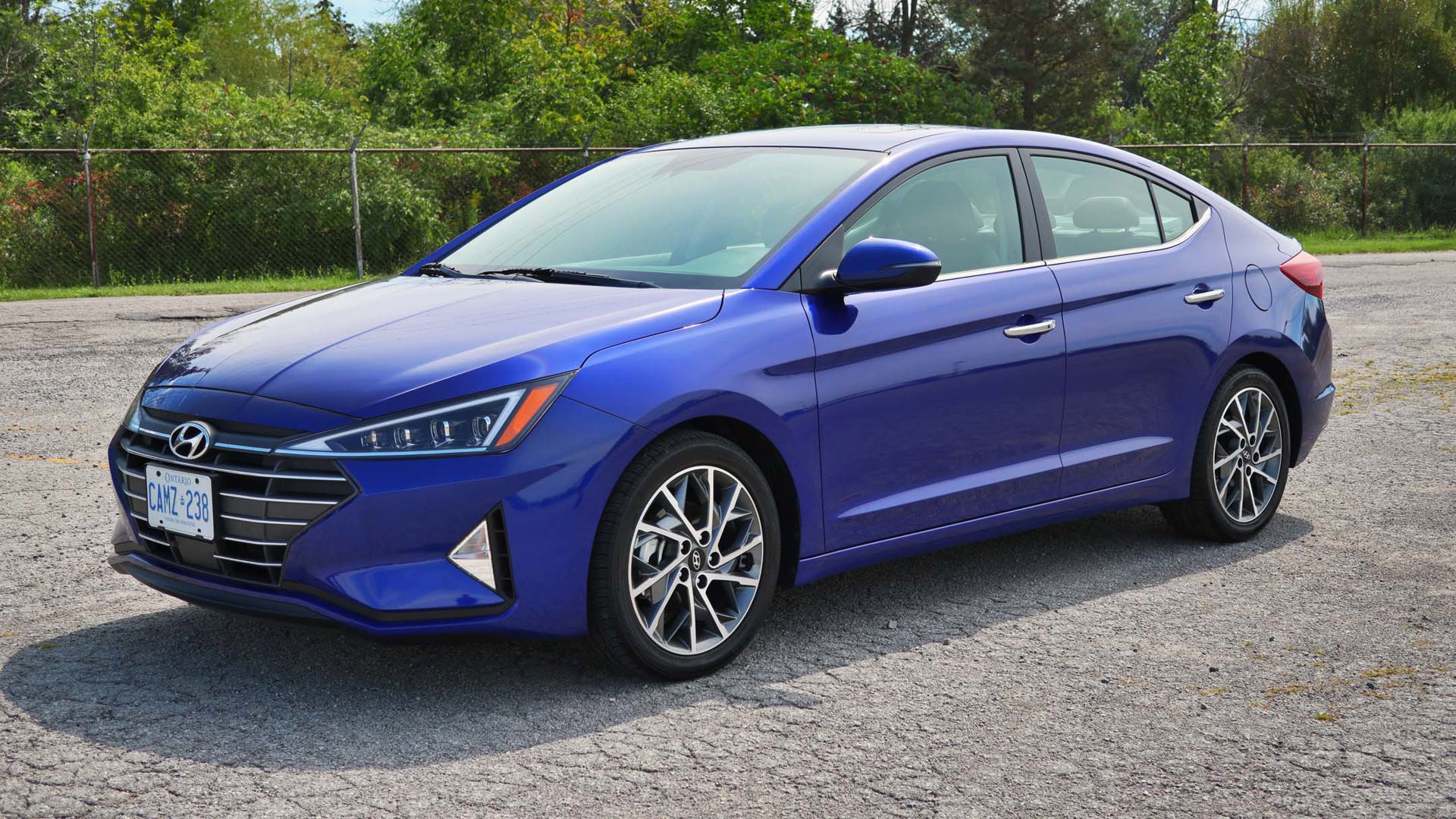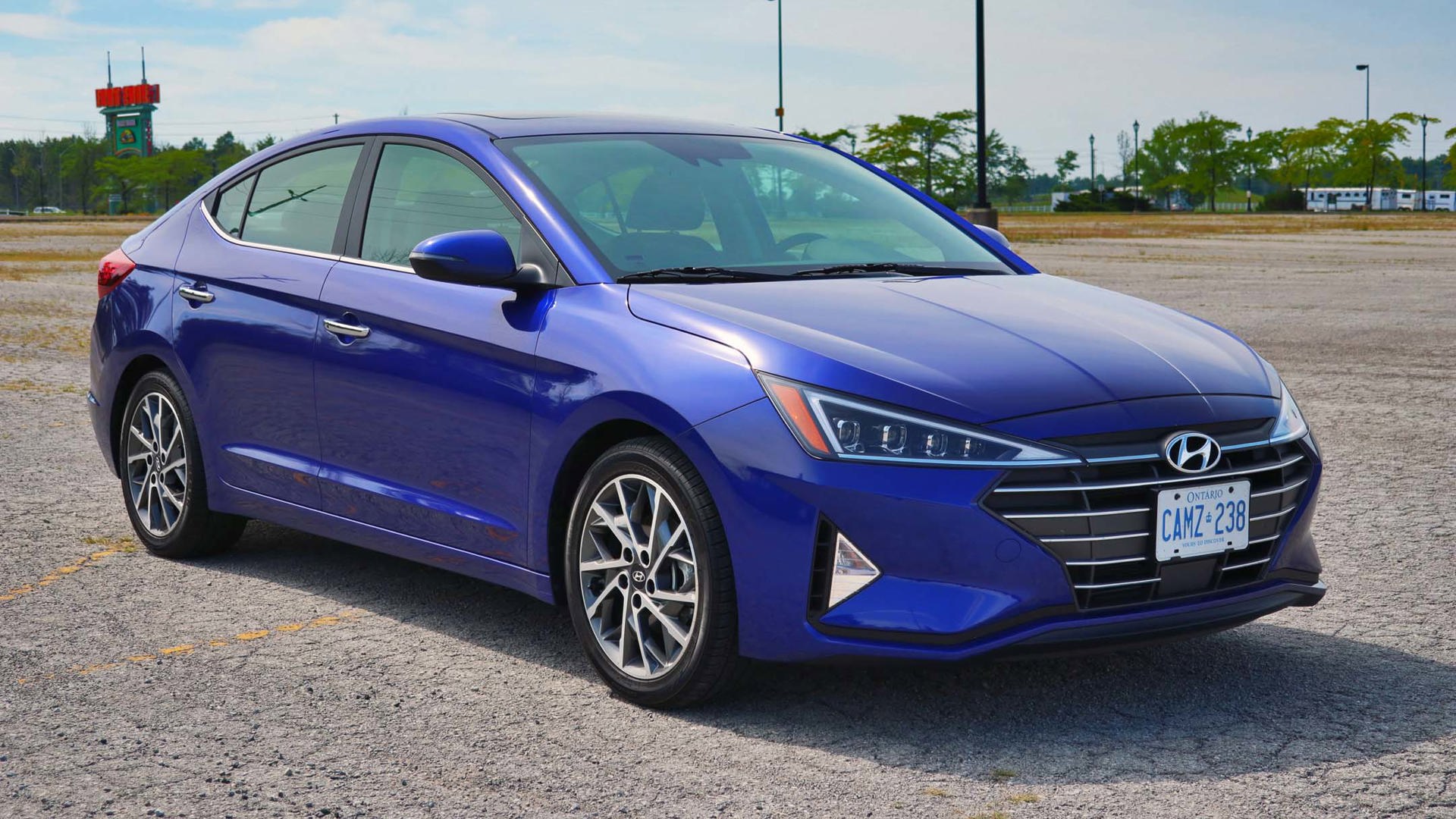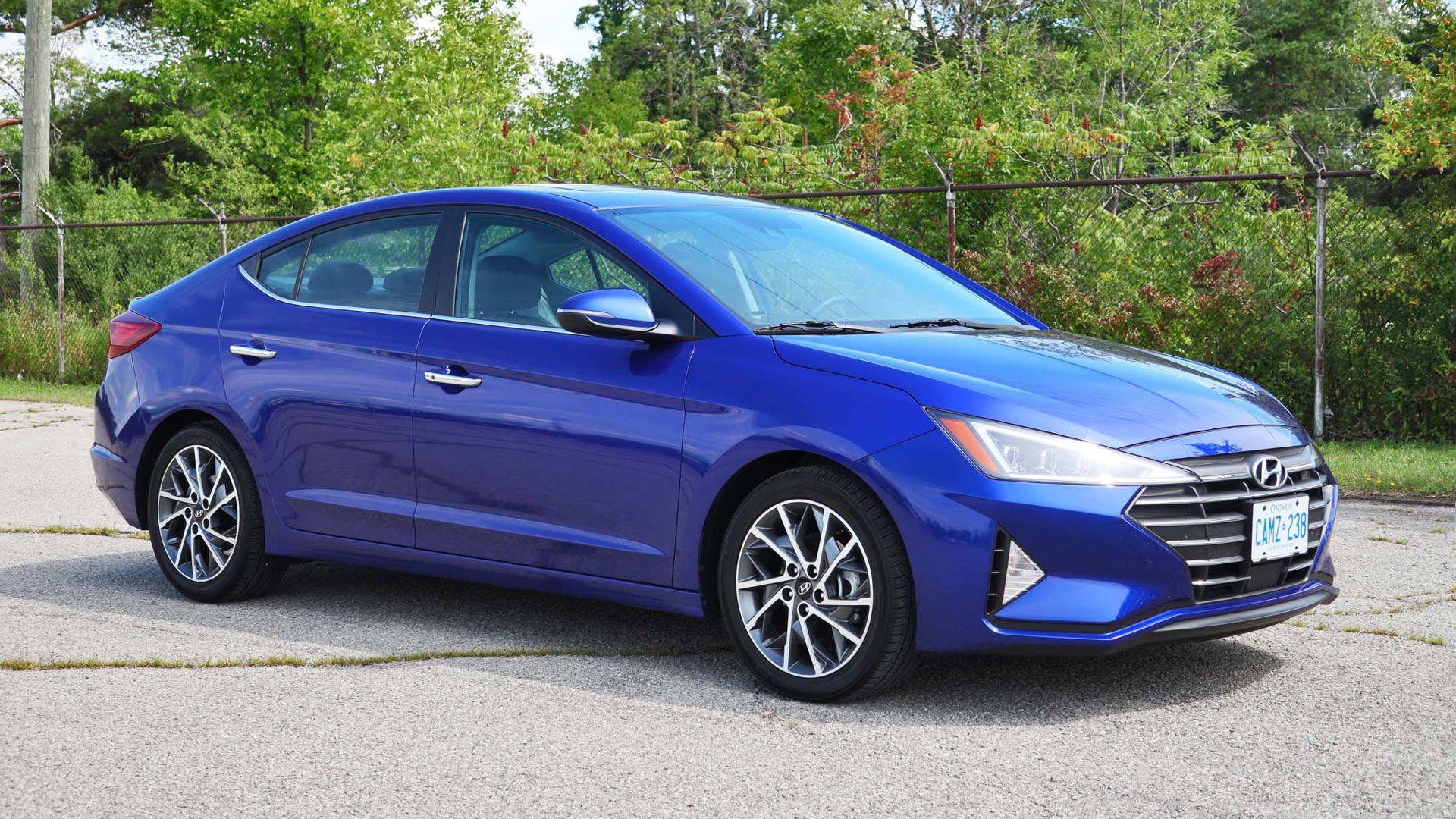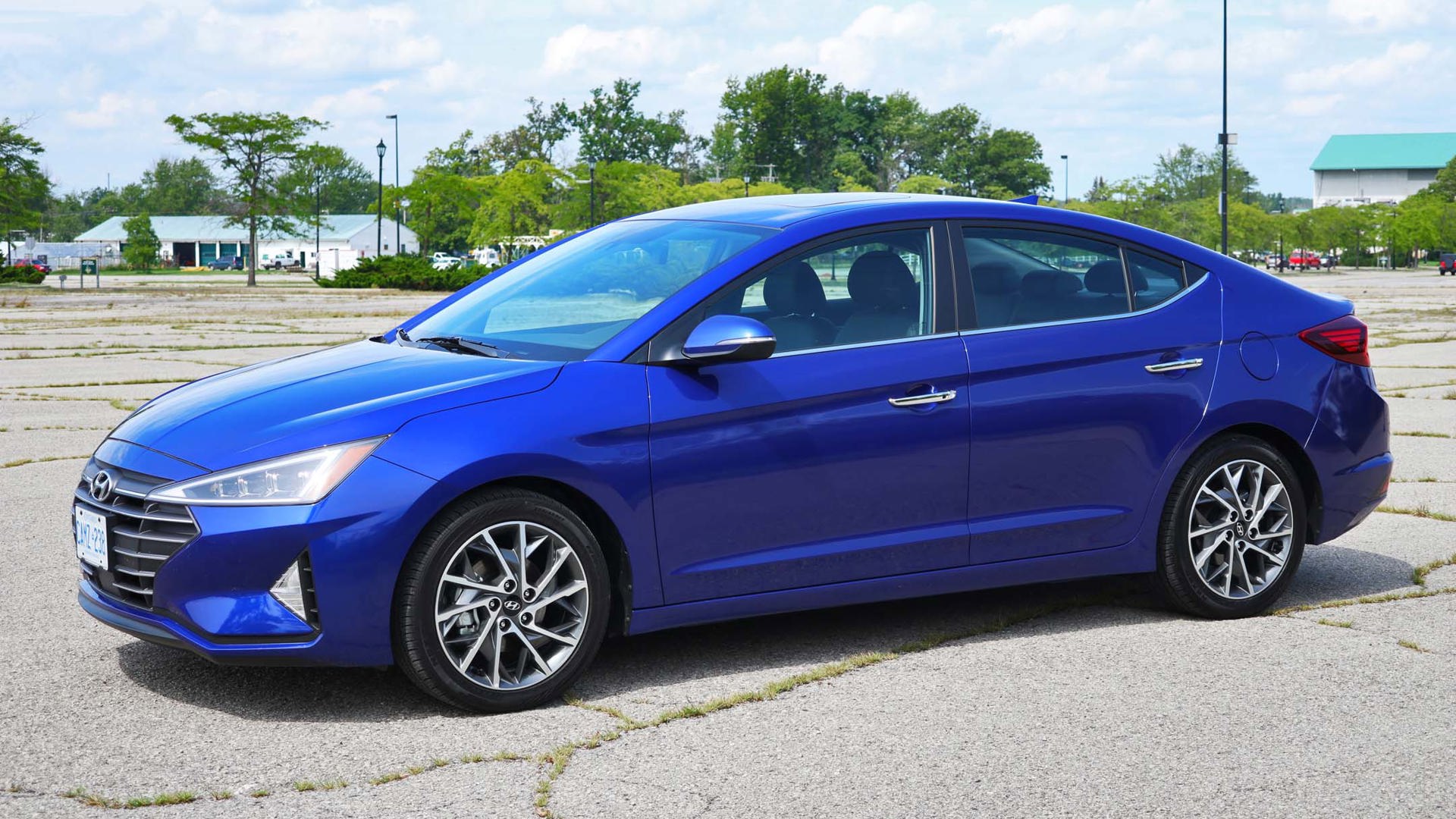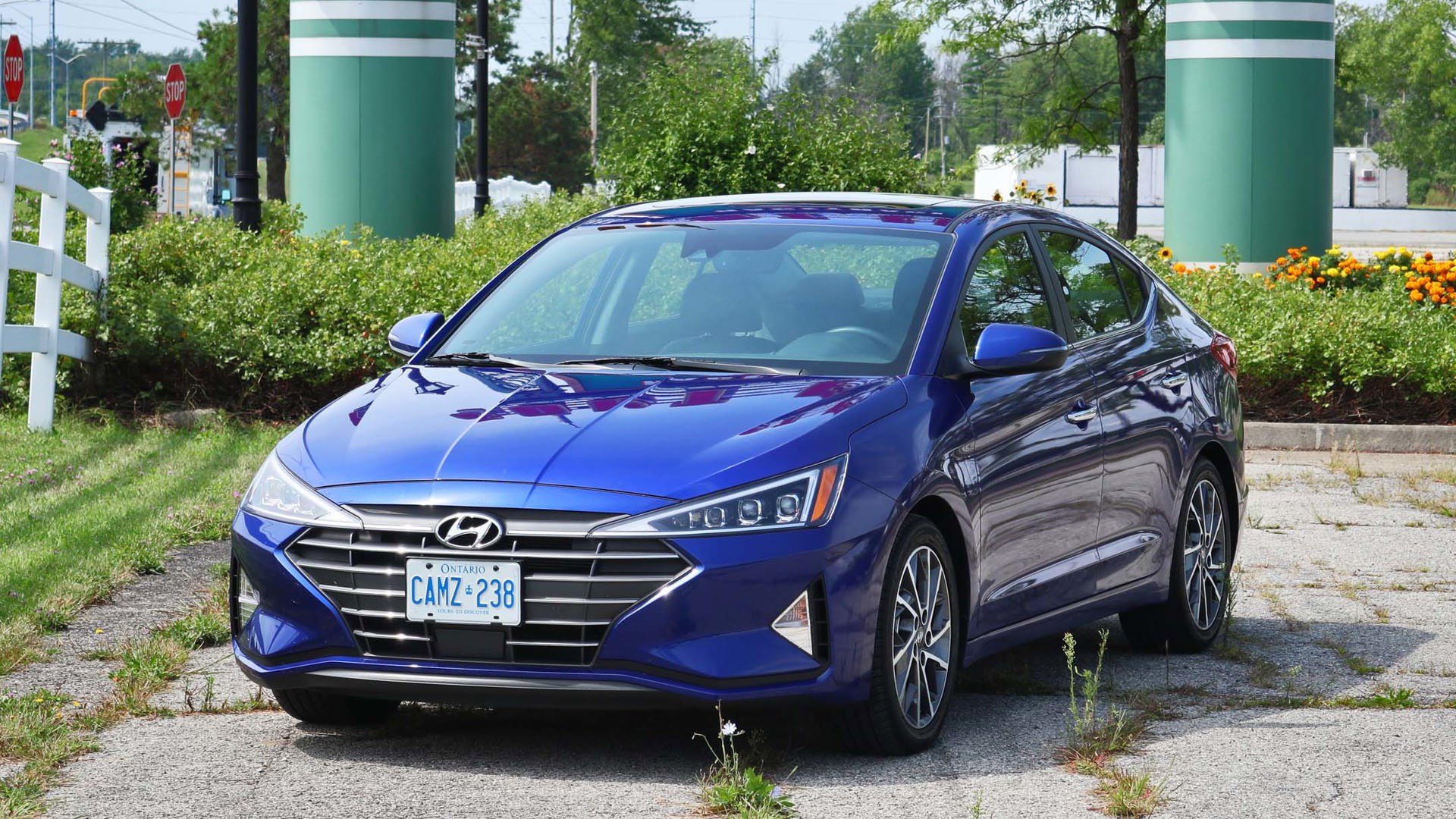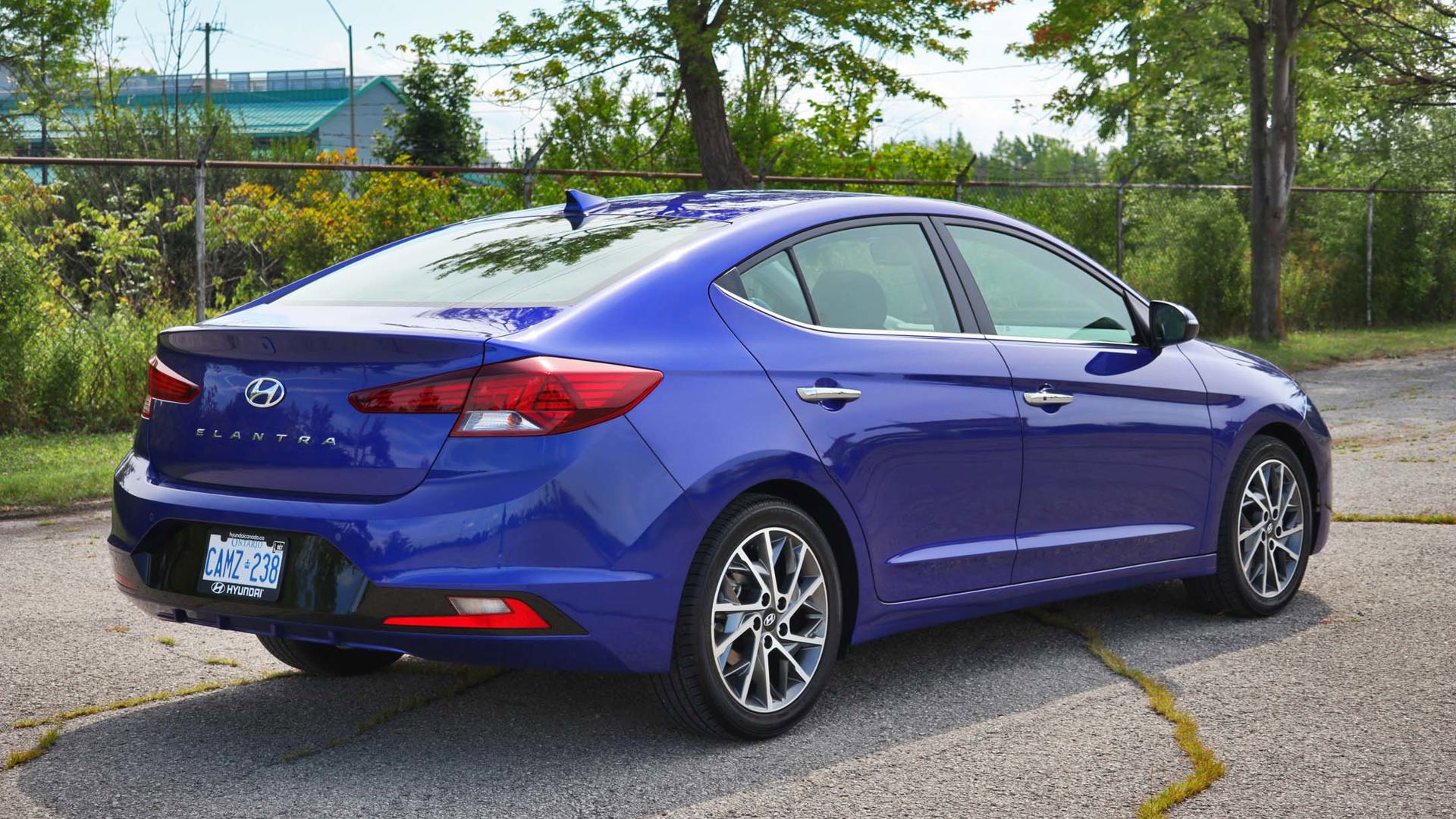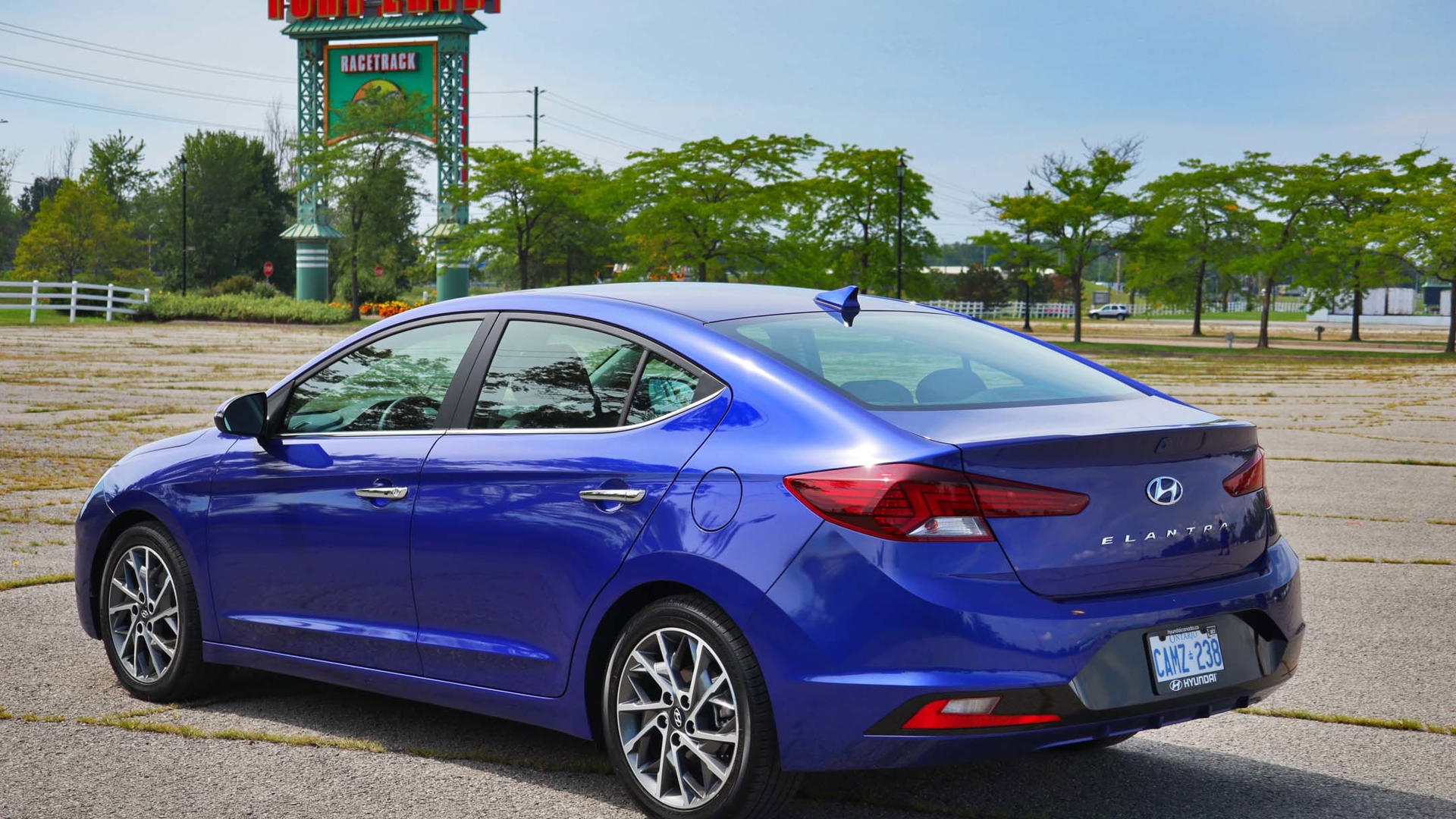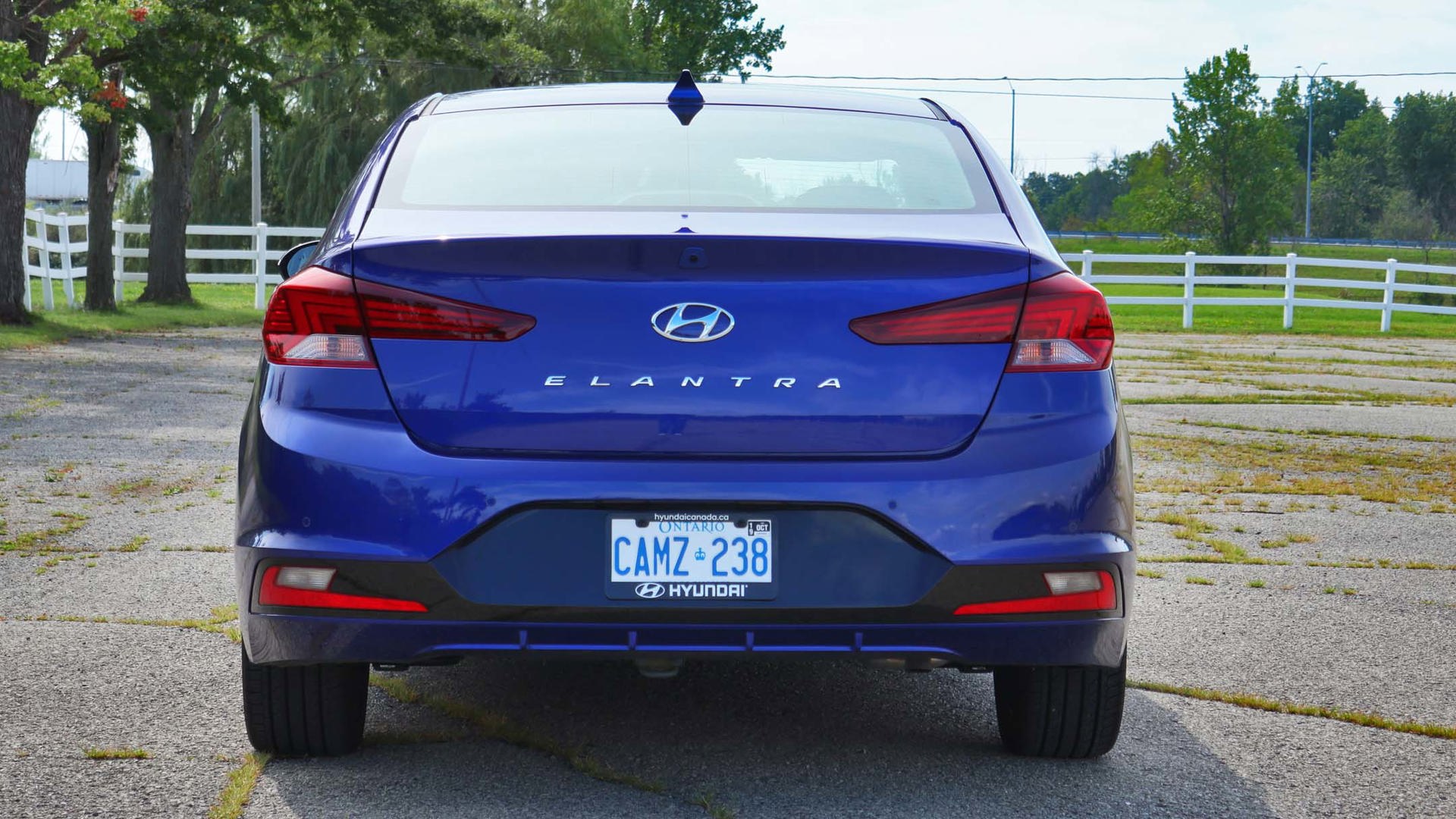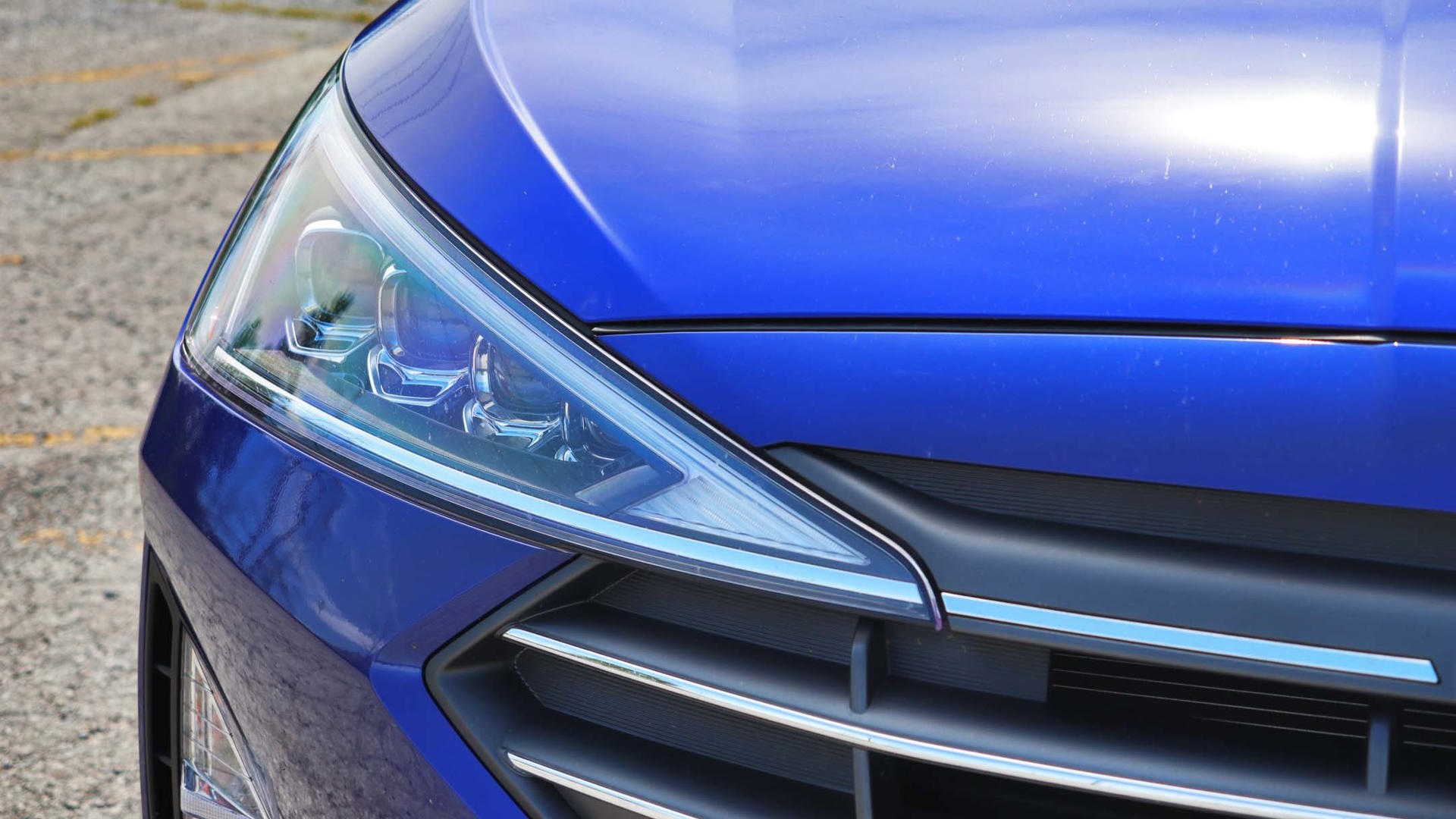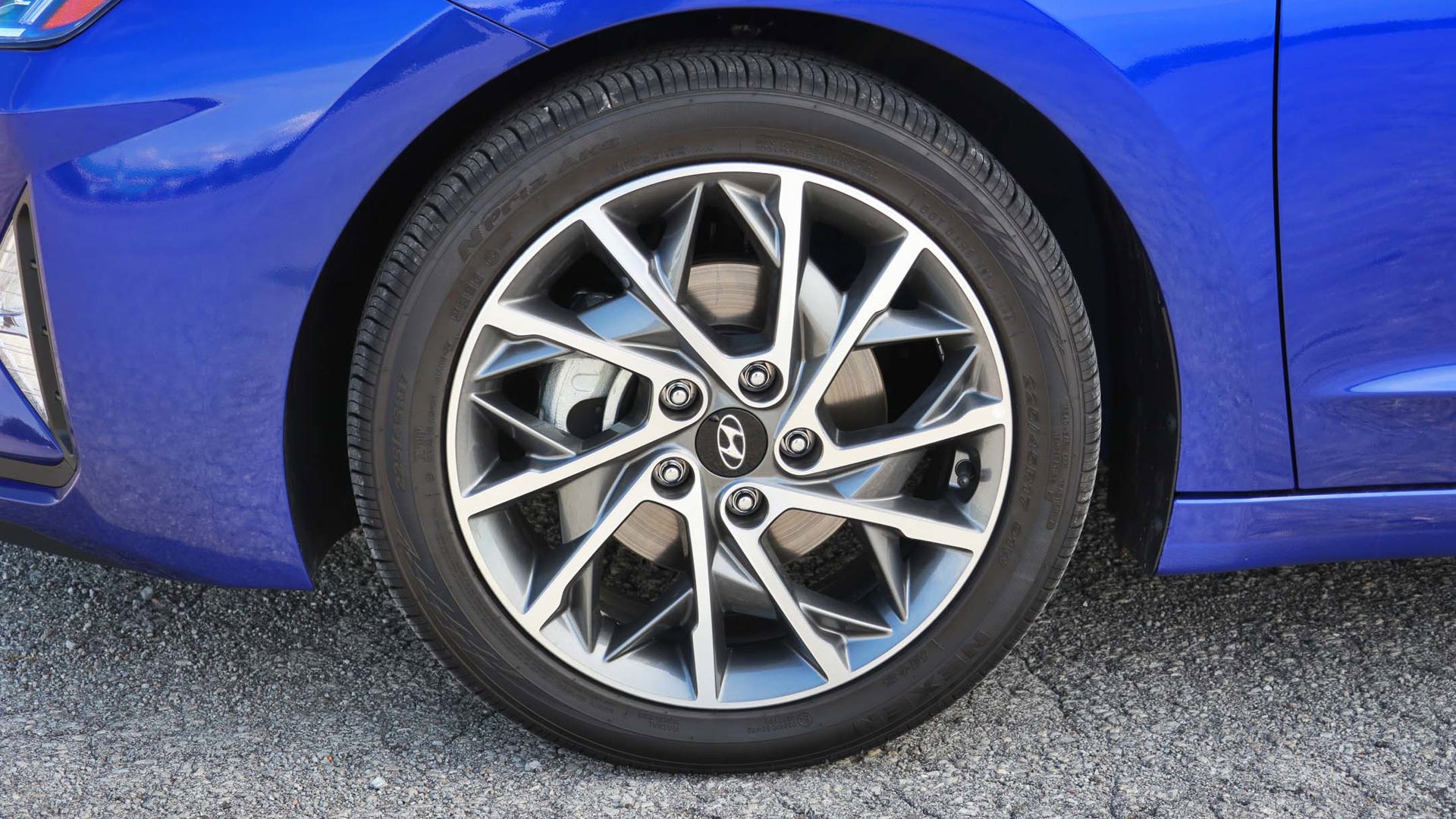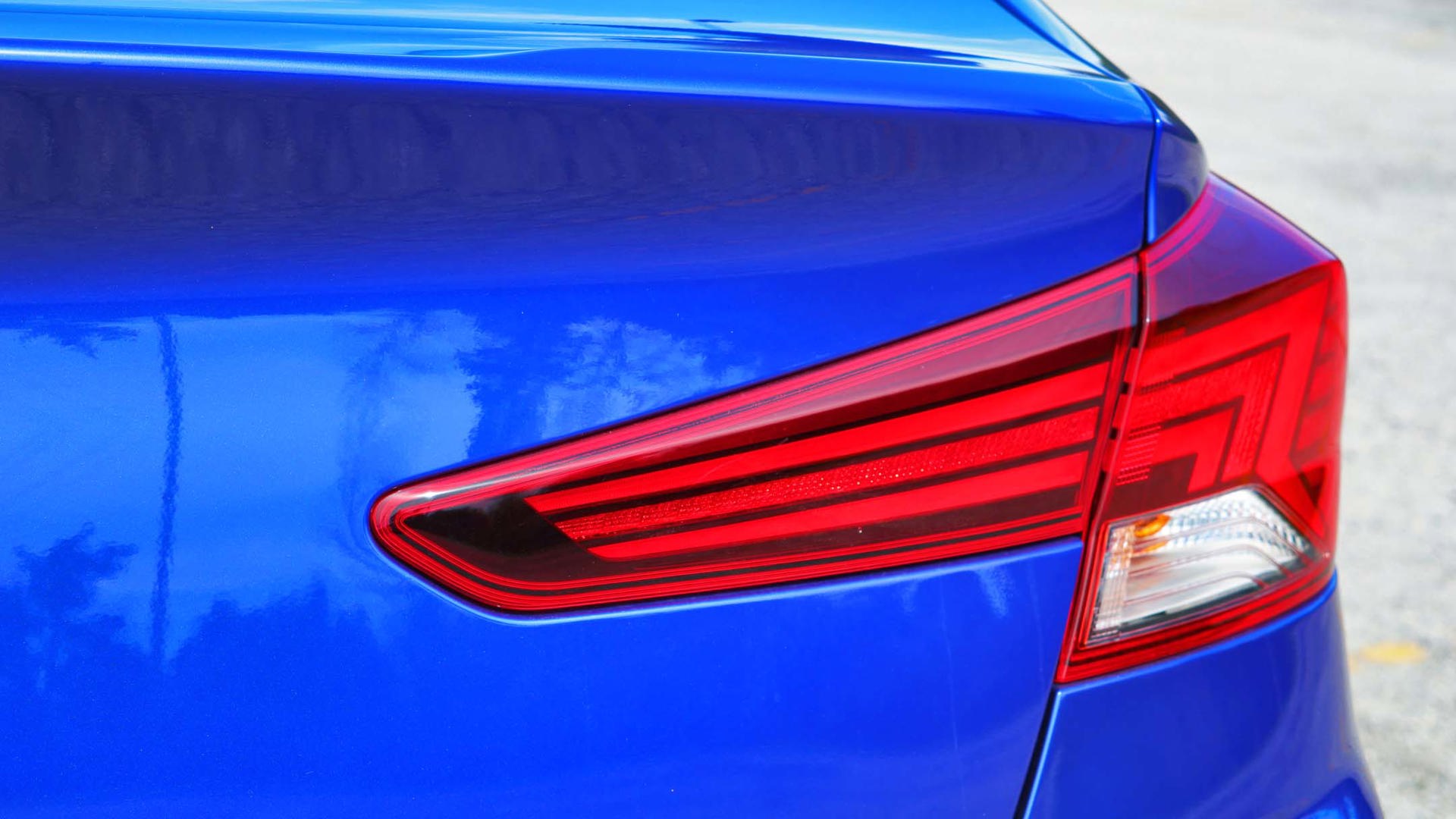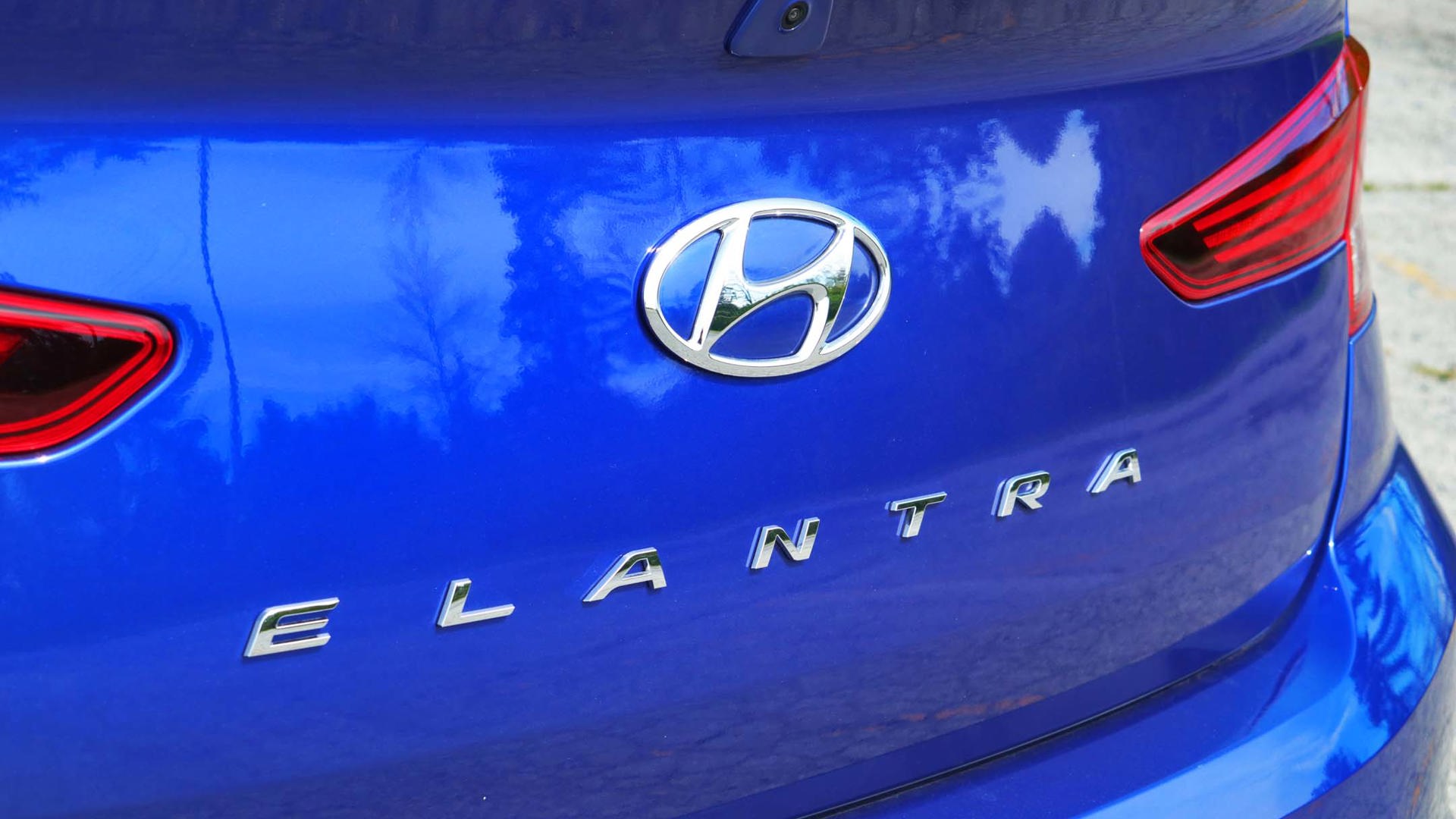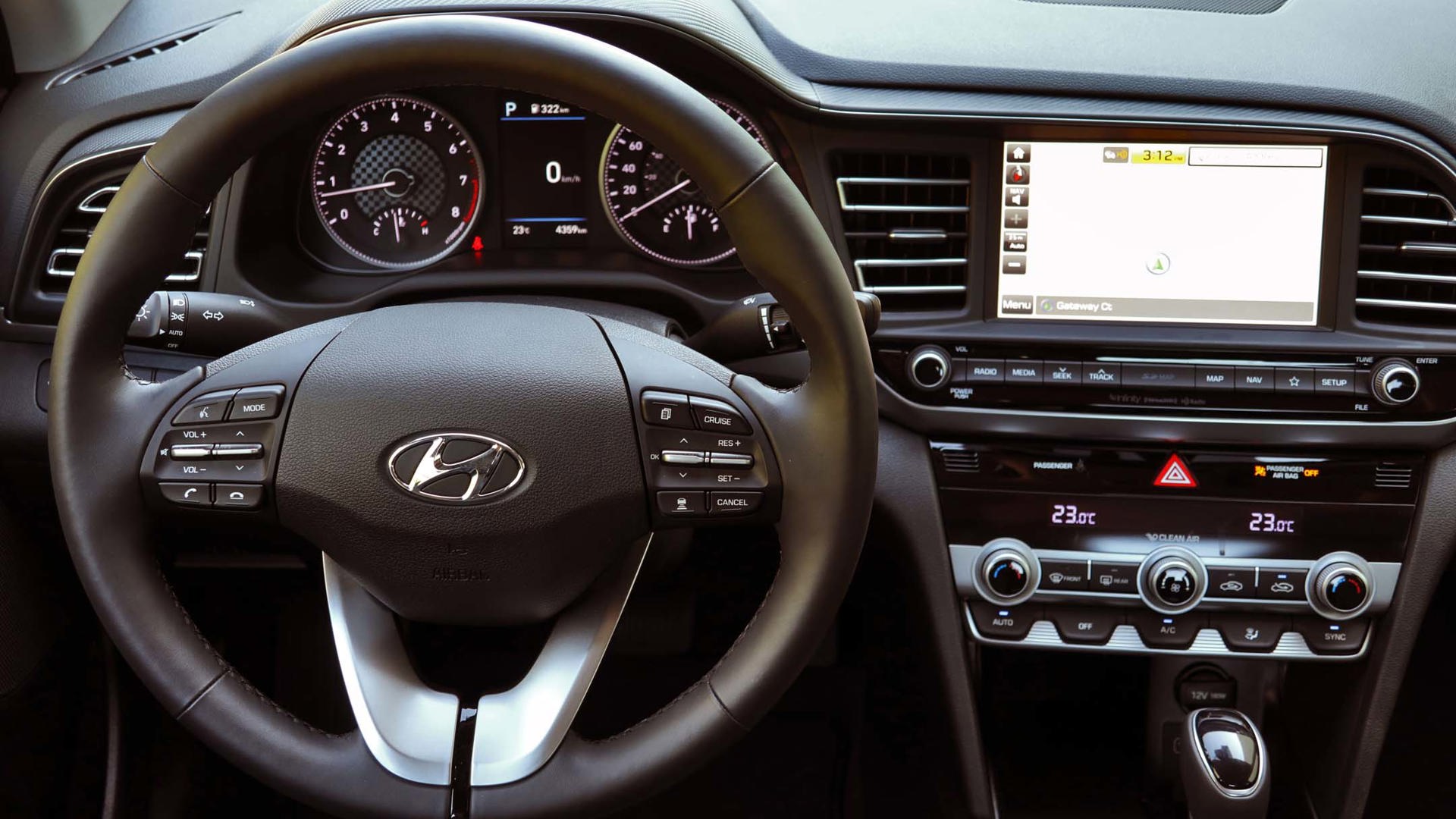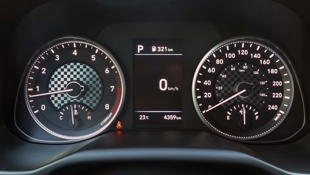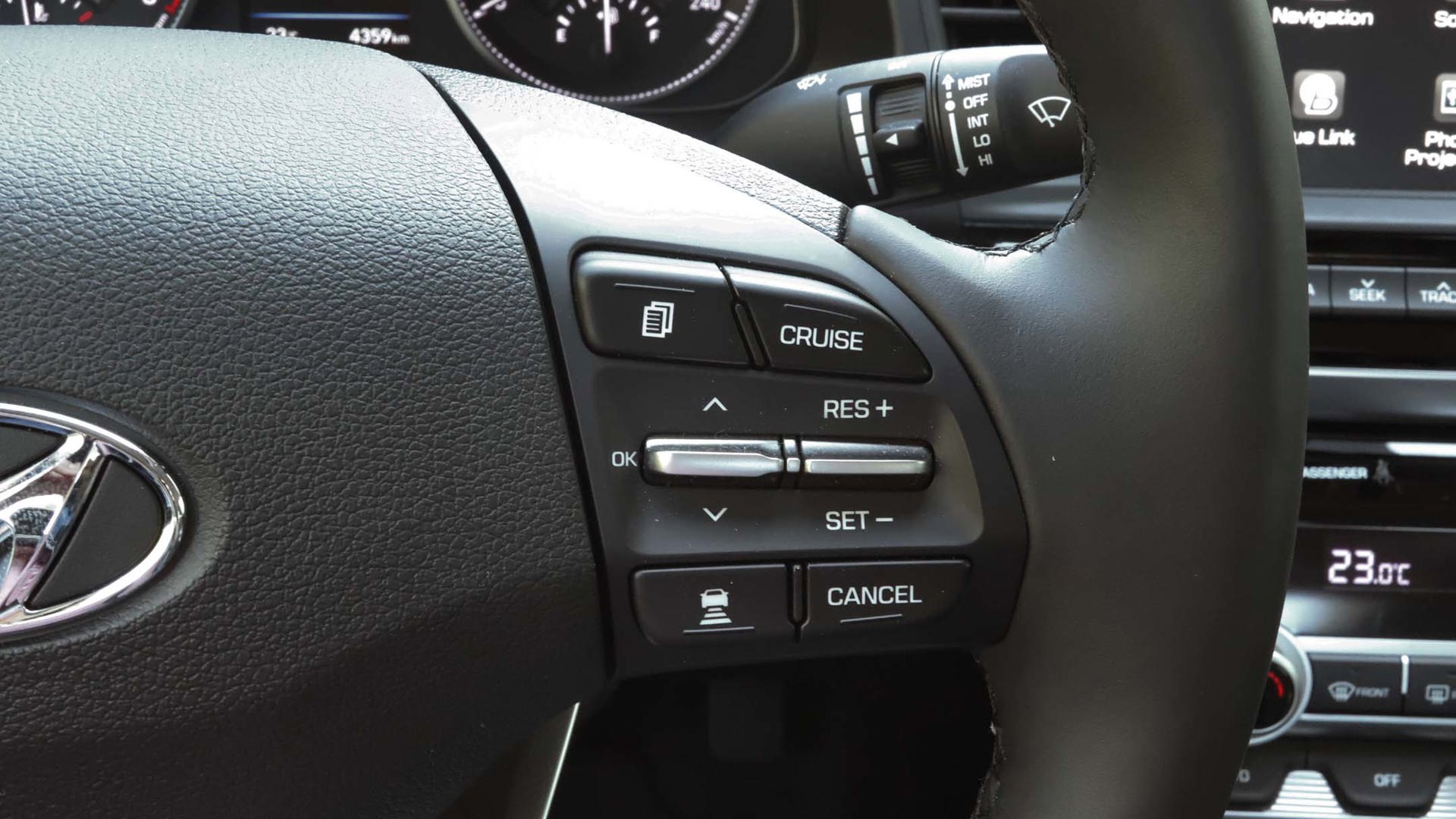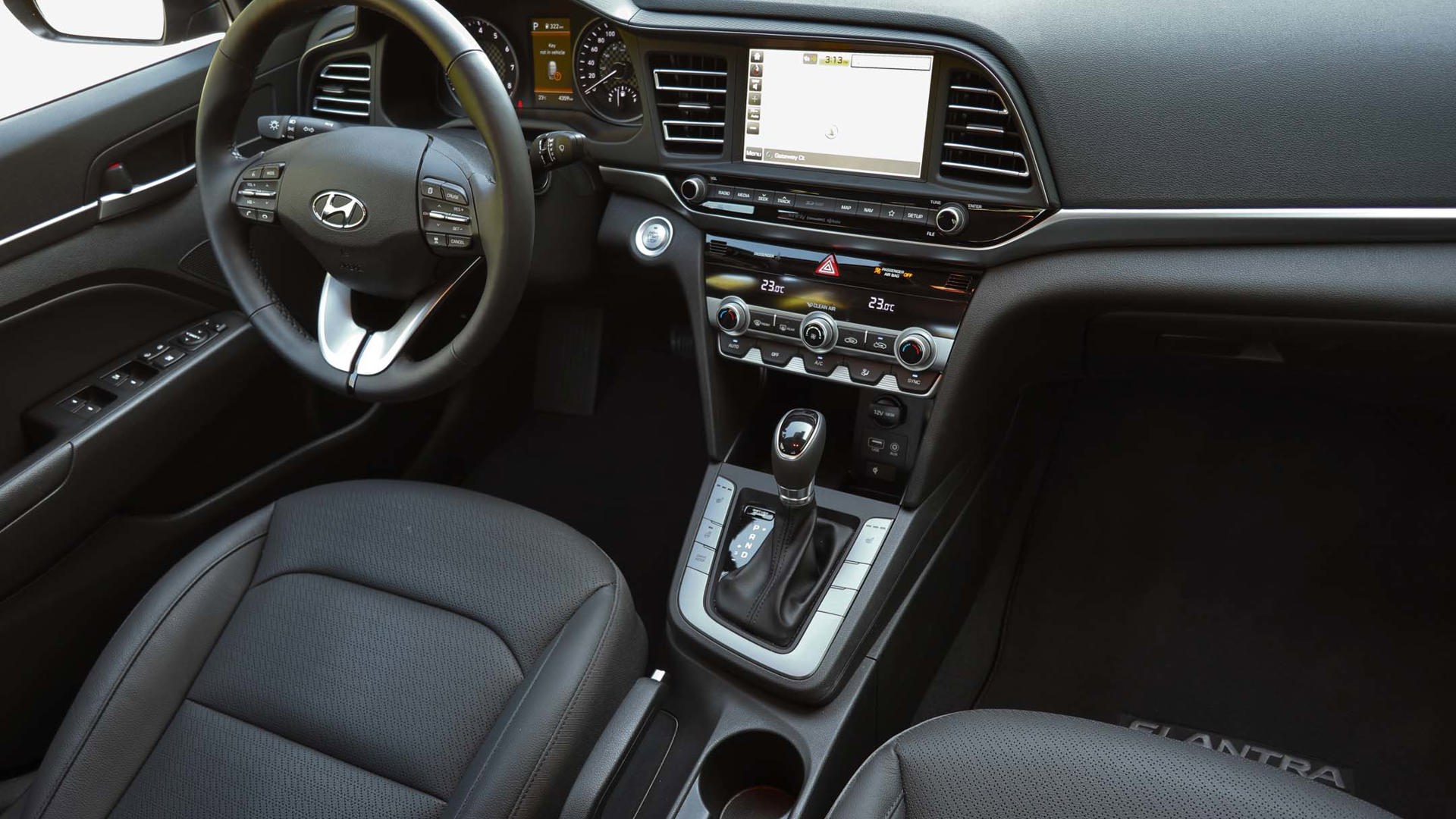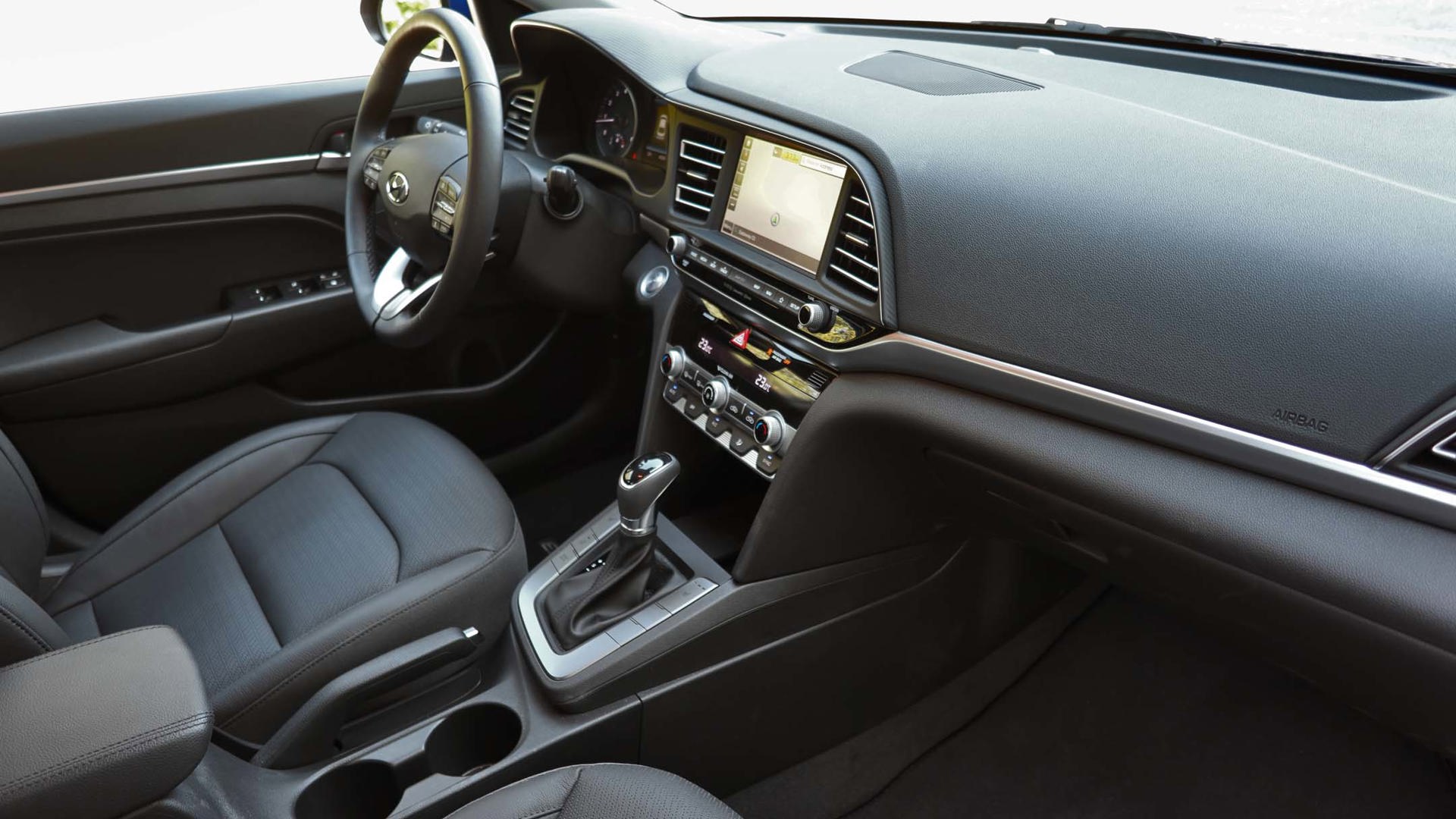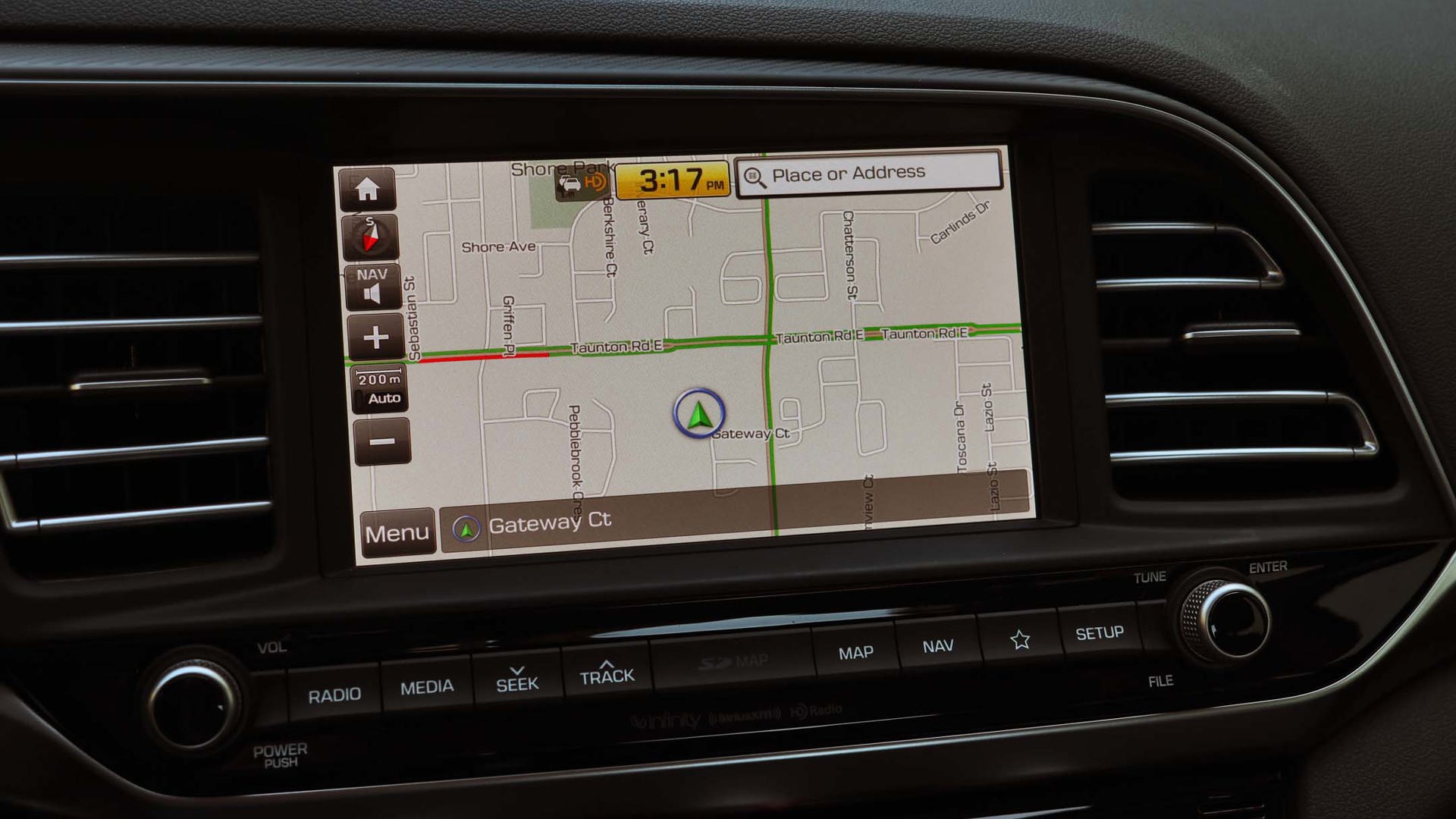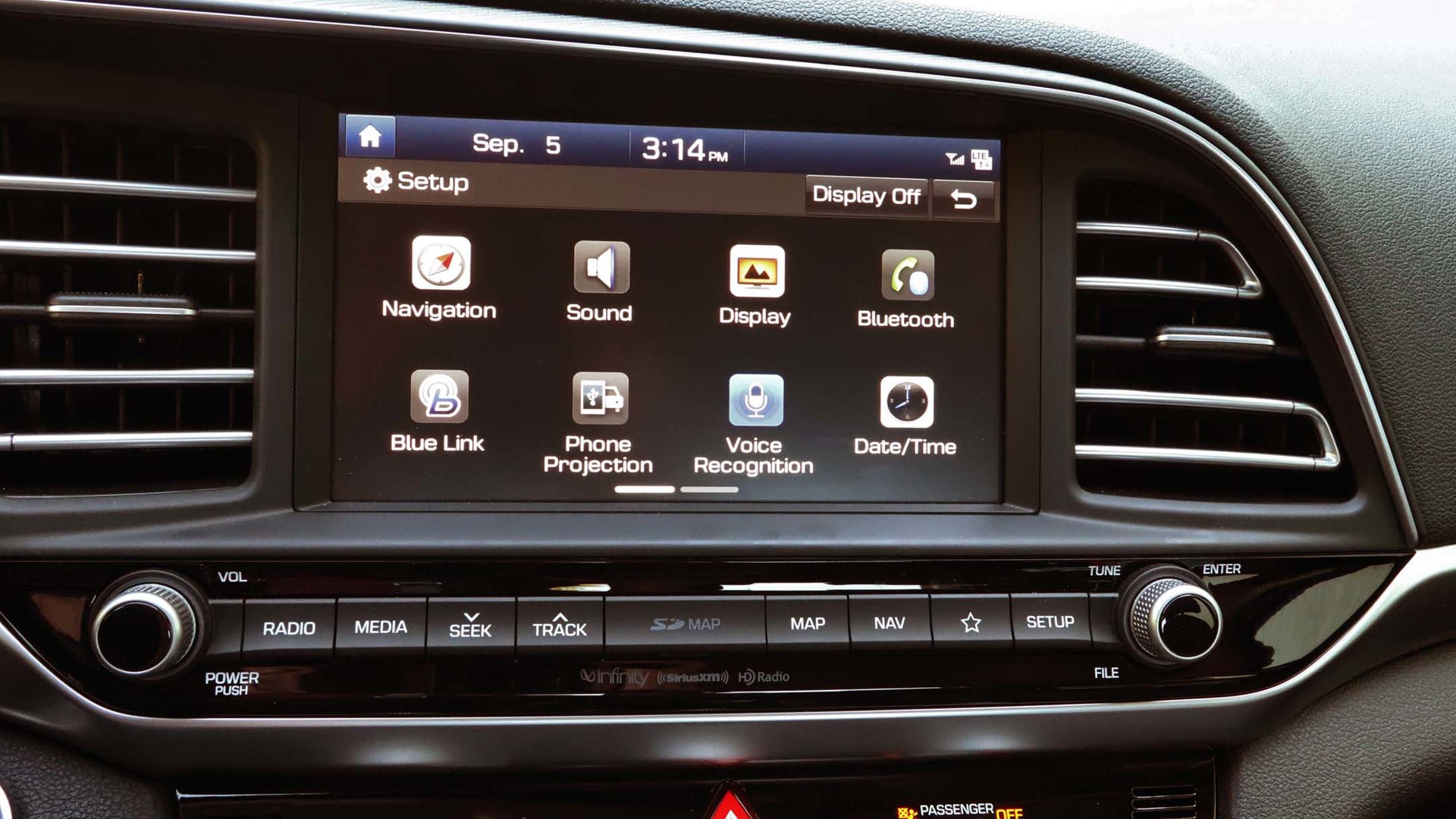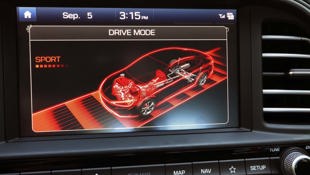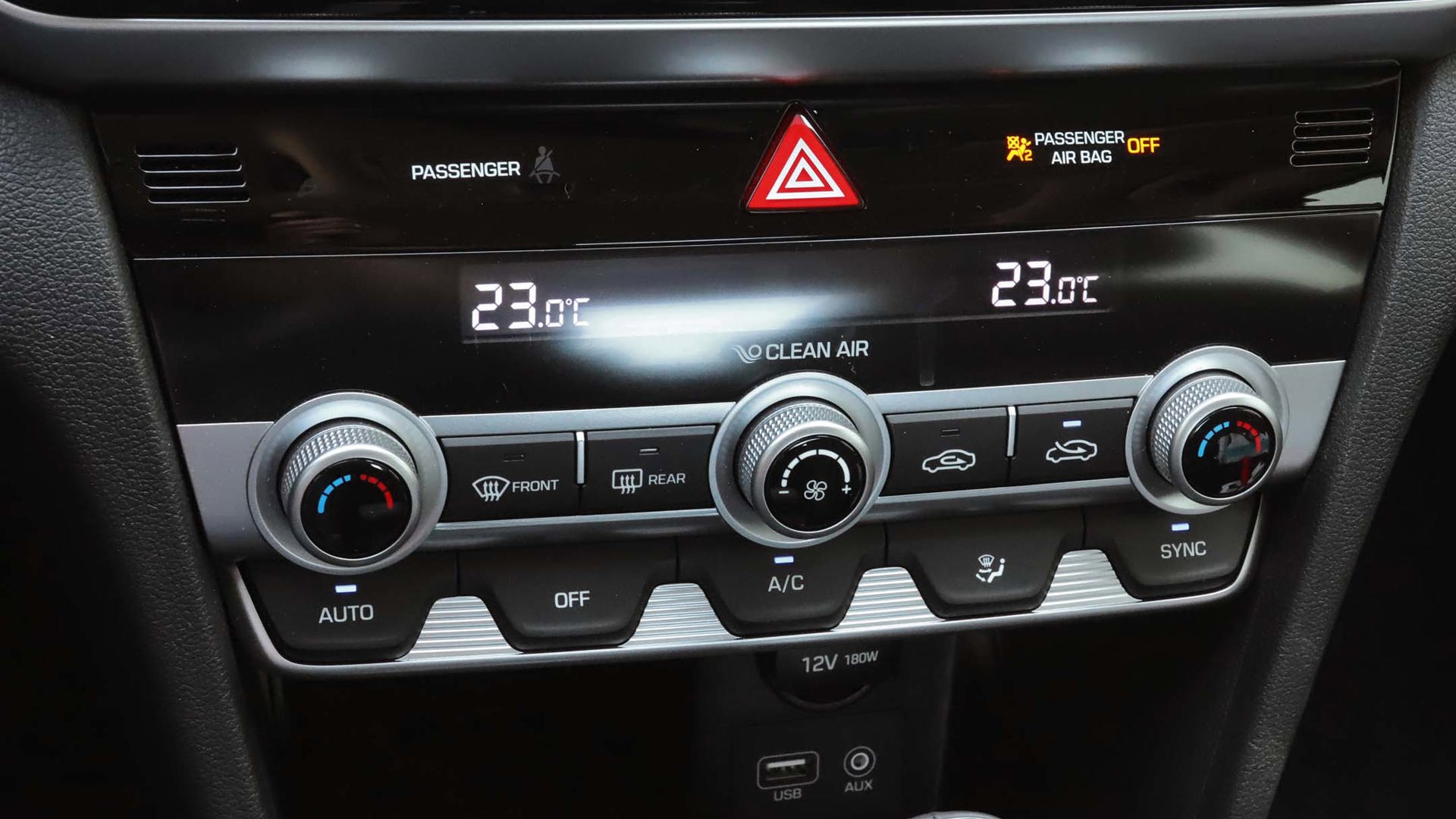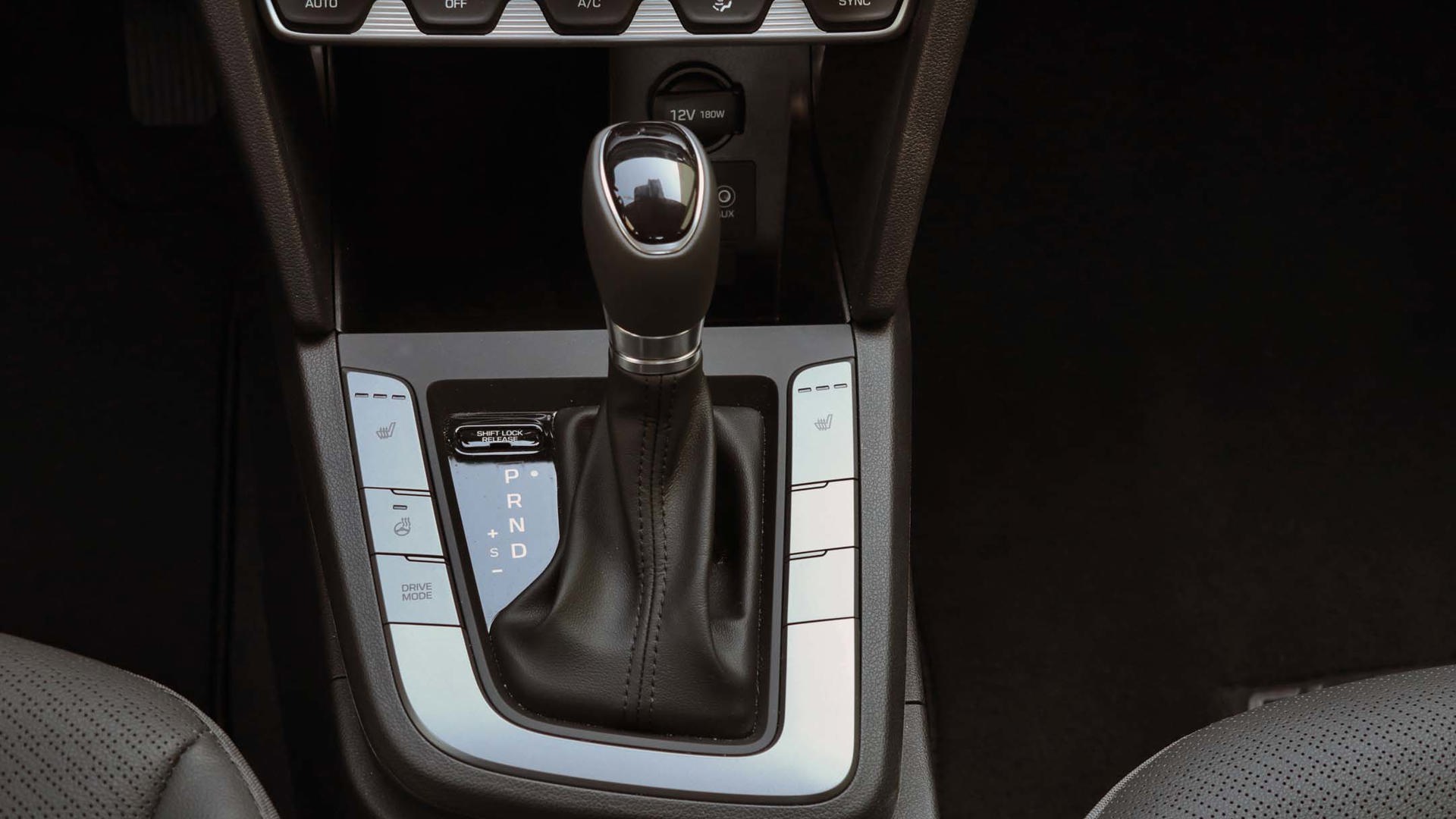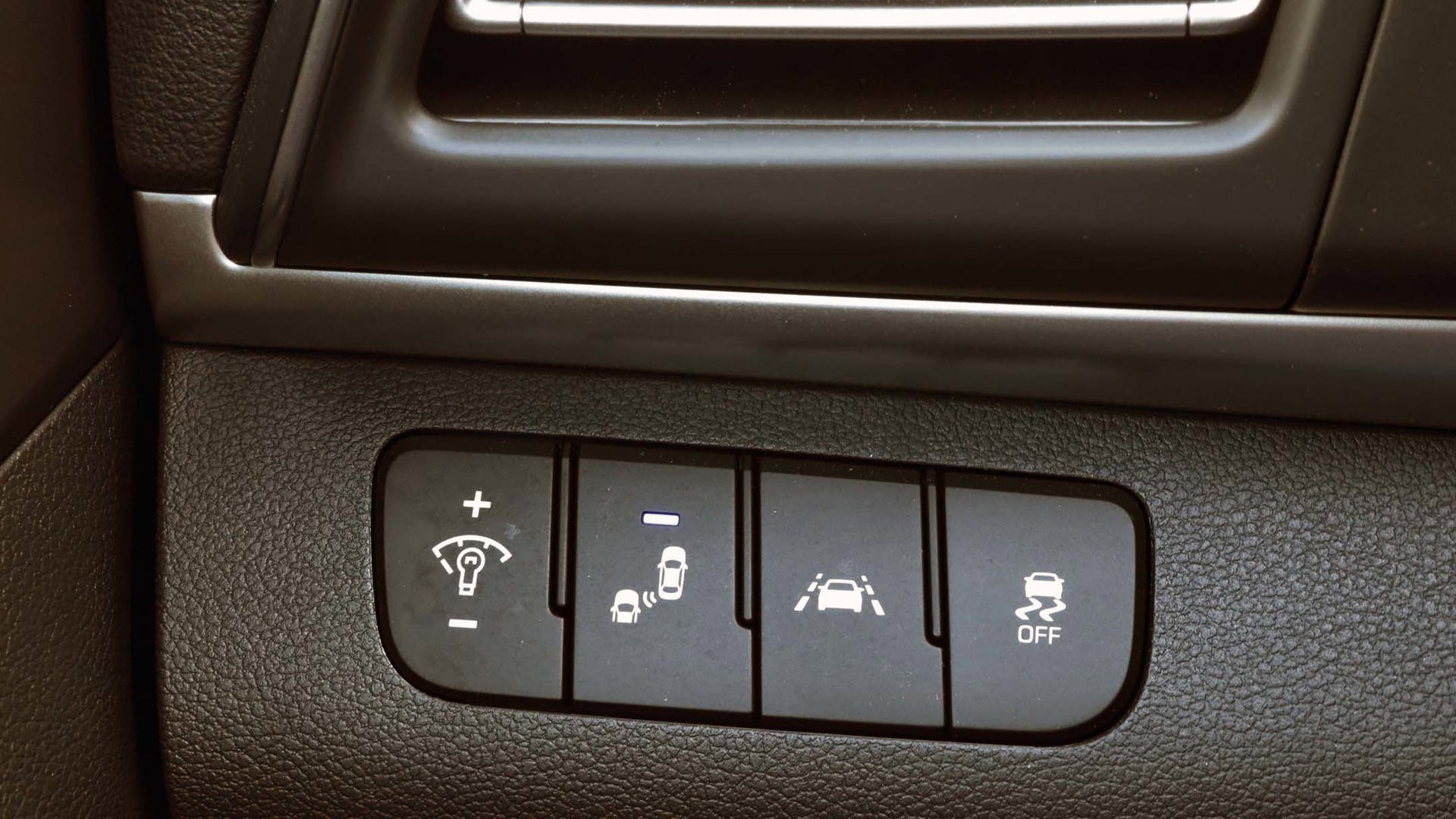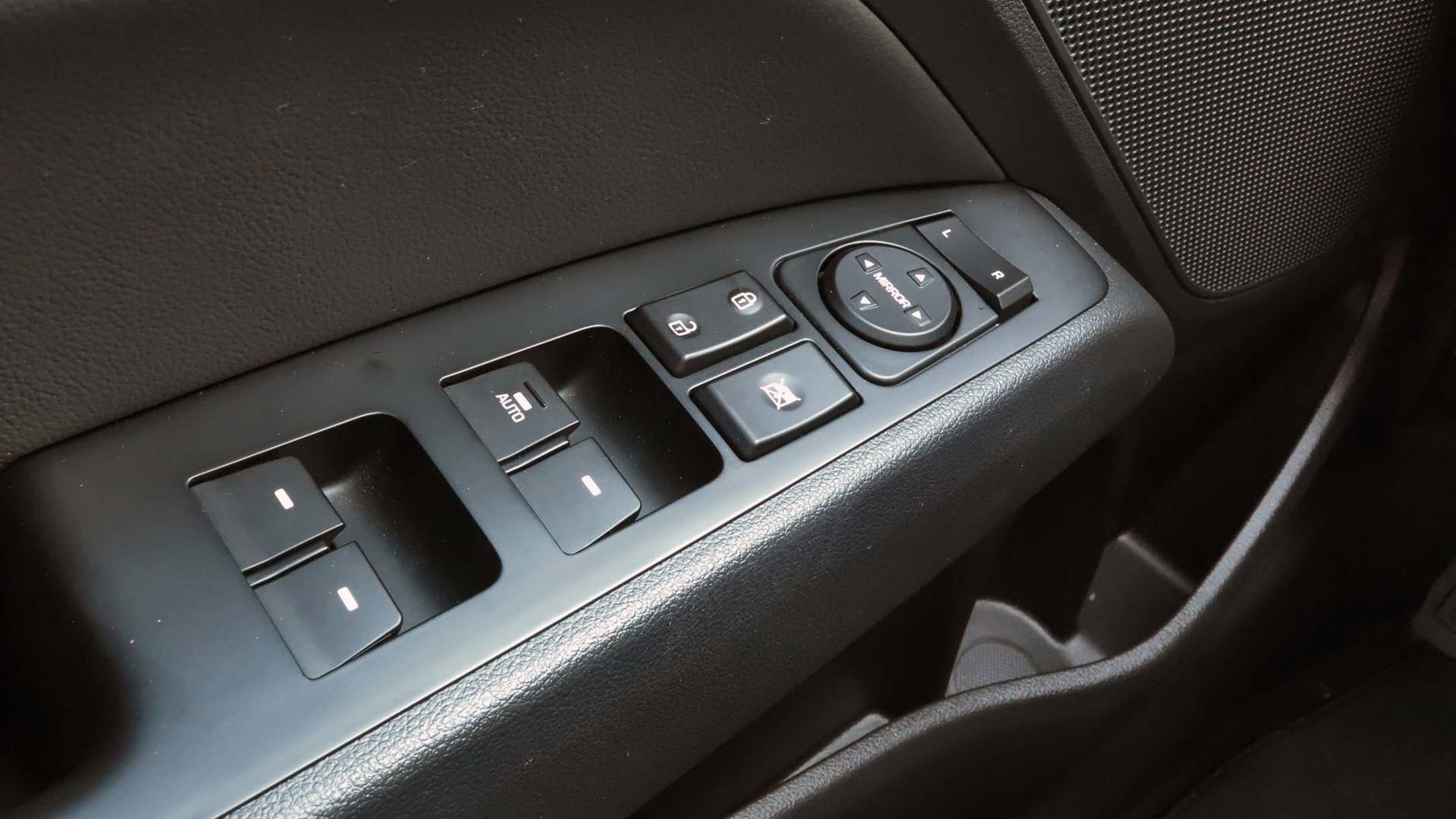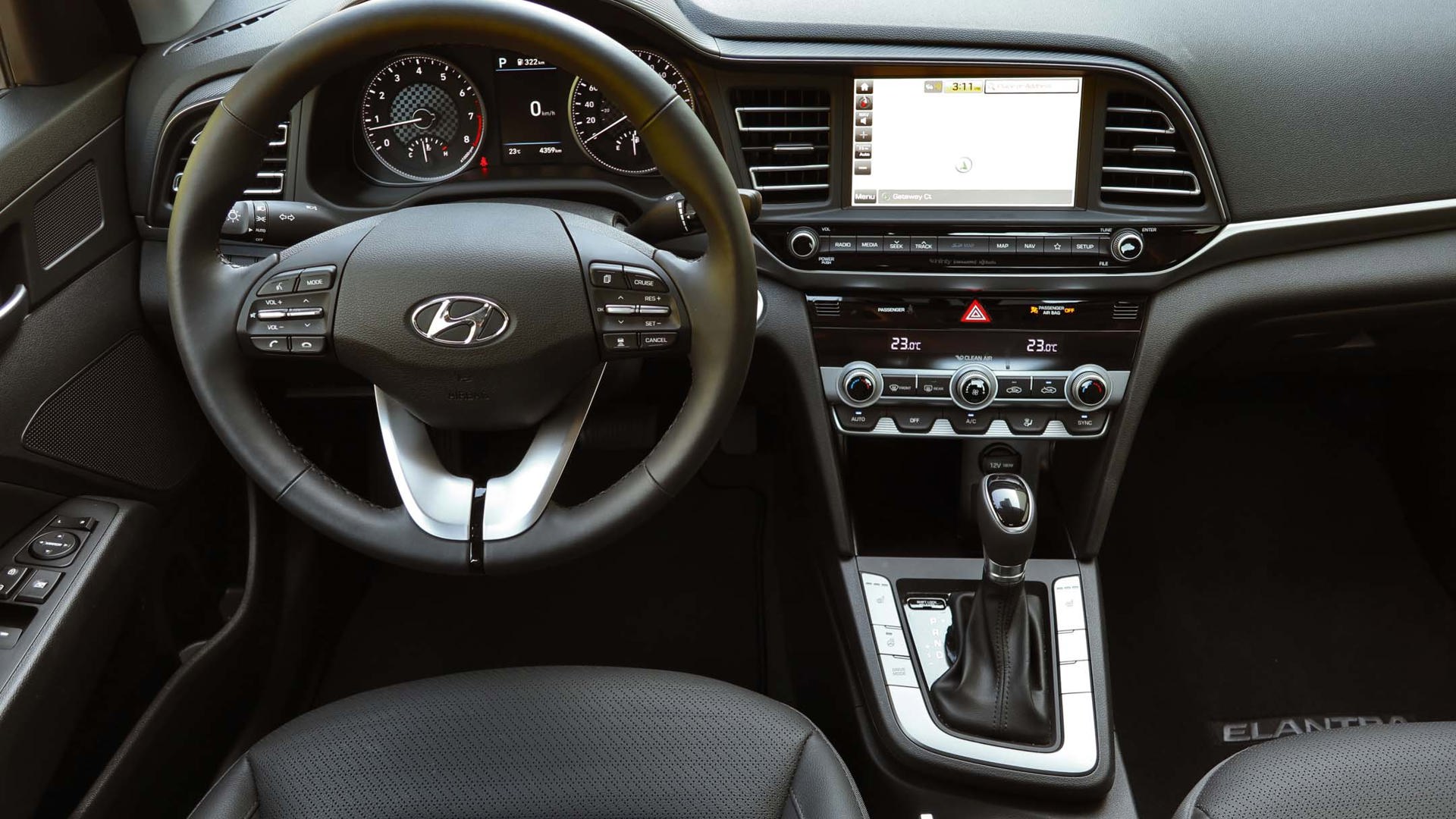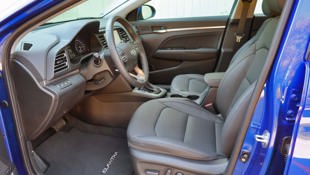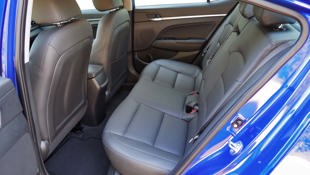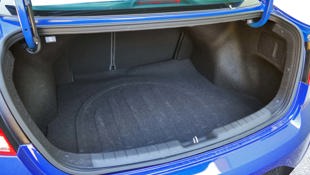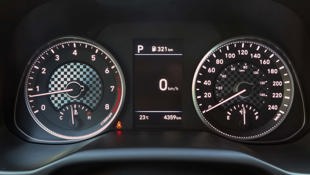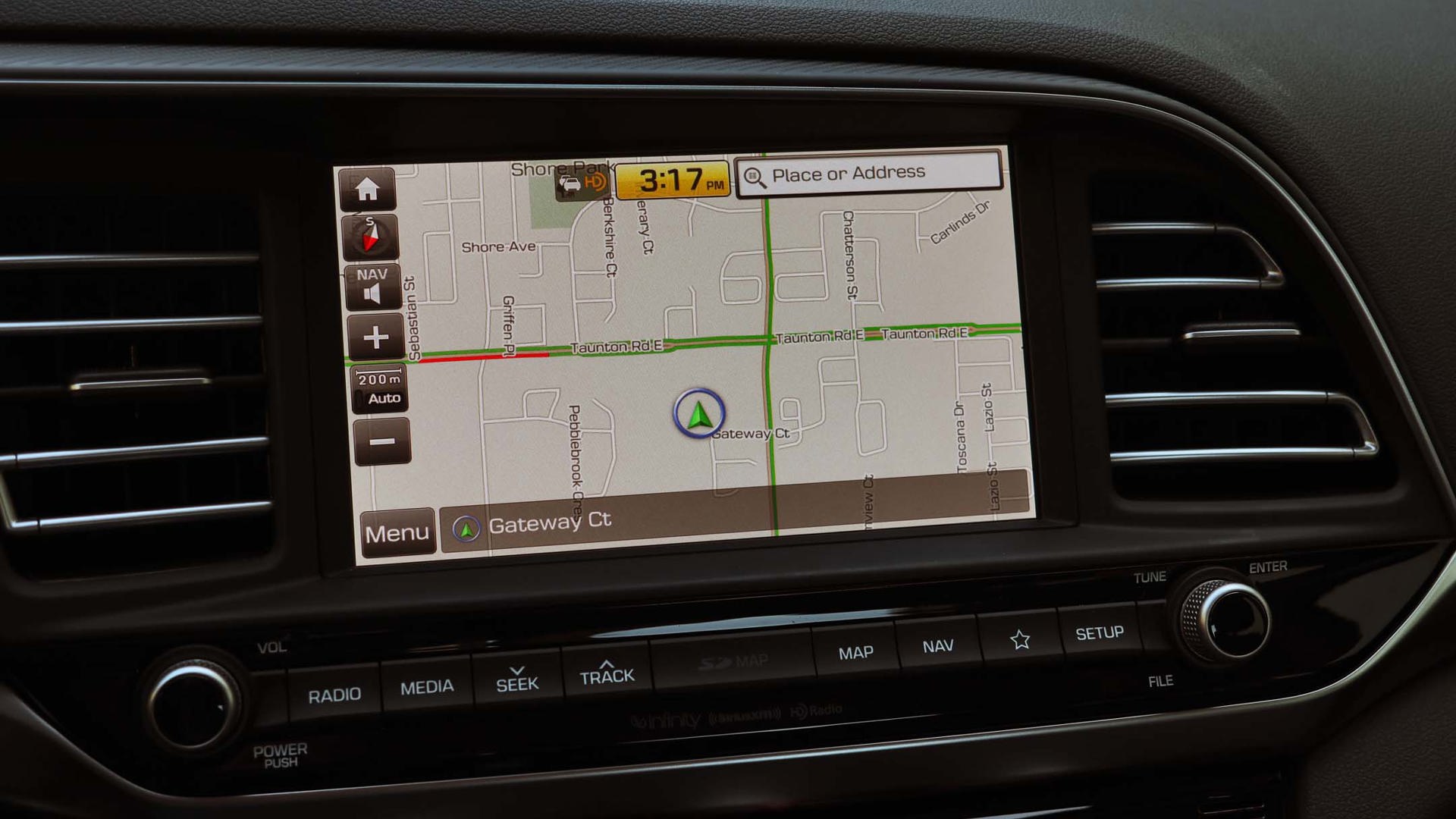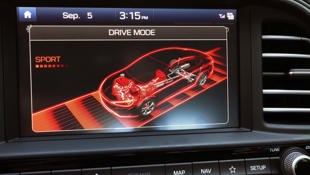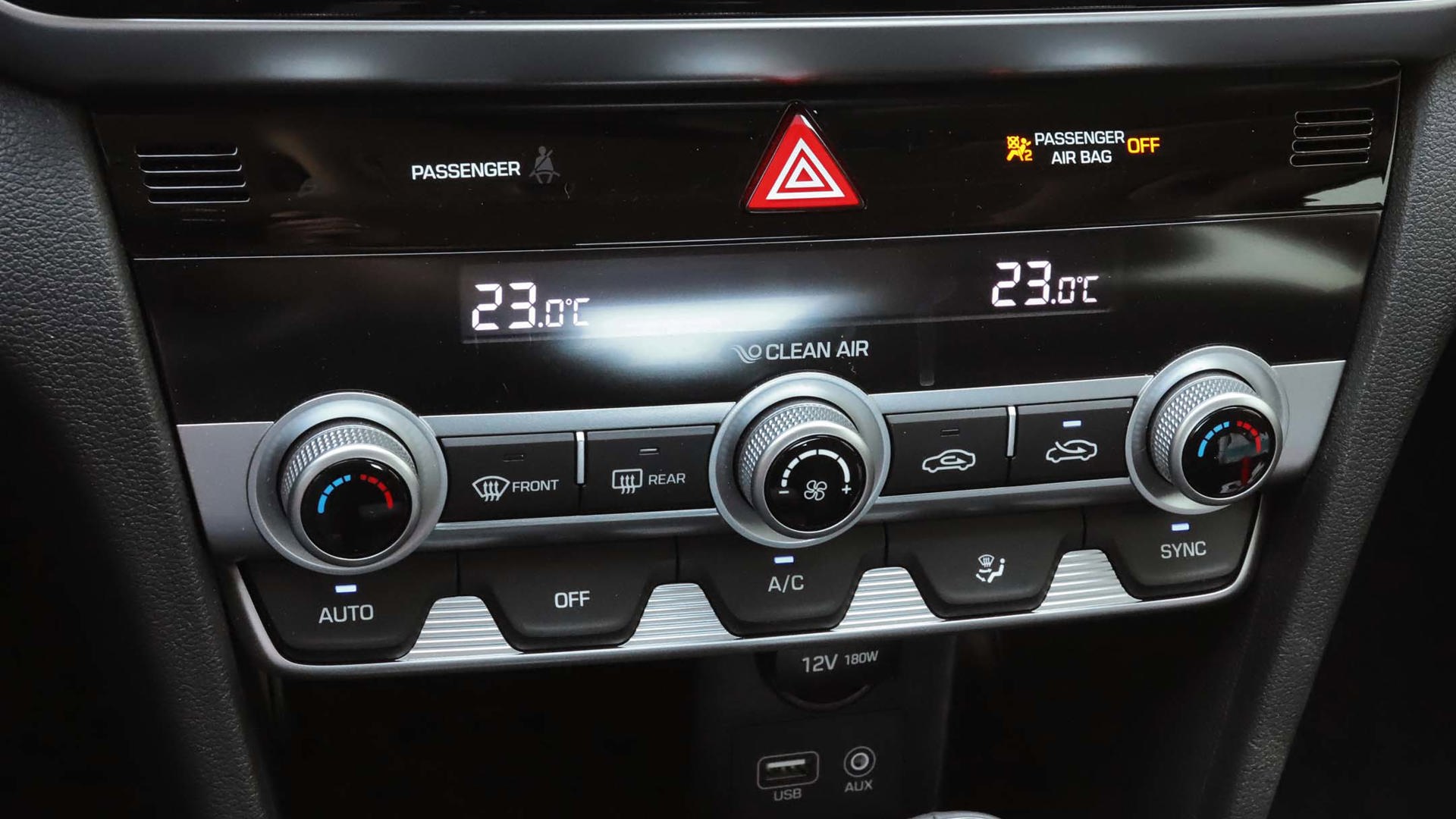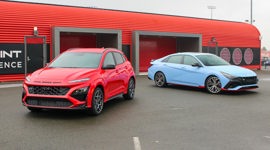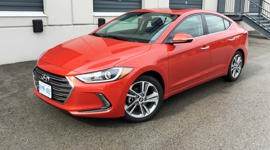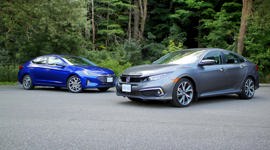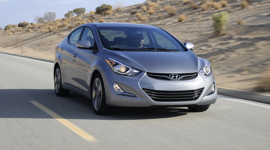 AutoTrader SCORE
AutoTrader SCORE
-
STYLING8/10
-
Safety8/10
-
PRACTICALITY8/10
-
USER-FRIENDLINESS9/10
-
FEATURES9/10
-
POWER8/10
-
COMFORT7/10
-
DRIVING FEEL8/10
-
FUEL ECONOMY9/10
-
VALUE8/10
After so many years of holding onto a conventional automatic transmission, Hyundai is finally giving up the gears. For 2020, its compact Elantra sedan drops its six-speed automatic in favour of a continuously variable transmission (CVT) for better fuel economy – and it’s a pretty slick unit. The sedan also slims down to a single engine choice. It comes in four trim levels and still offers a manual transmission in the base version that starts at $17,149 before freight and fees. I skipped all the way to the top trim, which came in at $27,549 before delivery and taxes, plus $200 for its optional Intense Blue paint.
Styling: 8/10
The Elantra doesn’t set a new standard for the segment, but it’s a good-looking beast nevertheless. The chrome bar in the grille make the nose look wider, and the triangular headlamps – LED on the top-grade Ultimate trim – are nicely integrated. The Essential gets 15-inch steel wheels, the Preferred wears 16-inch alloys, and the Luxury and Ultimate get 17-inch rims.
The taillights are also LED on the Ultimate, and wrap into the trunk. That “smart” trunk lid unlatches hands-free, but I still like to have an exterior release button, and planned to fault the car when I couldn’t find one. But then I checked the owner’s manual, and lo and behold, there is one – cleverly hidden behind a panel in the “H” trunk logo. How cool is that?!
Safety: 8/10
The Elantra includes seven airbags and, as all new vehicles do, a standard rear-view camera on all trim levels. Only the base Essential lacks blind-spot monitoring. Lane-keeping, forward collision, and driver attention assists are included on the top two trims but aren’t available on the Essential. On the next-up Preferred, they can only be added as part of a package that also adds push-button ignition, the hands-free trunk, and a sunroof.
The Ultimate further adds adaptive cruise control, rear parking sensors, and its collision assist recognizes pedestrians. The adaptive cruise works smoothly, but the lane-keeping really wants you to stay in the middle of your lane of travel, and it can give the steering an unpleasant, jerky feel. Most of the time I left it shut off.
Both the U.S. National Highway Traffic Safety Administration (NHTSA) and the Insurance Institute for Highway Safety (IIHS) have crash-tested the Elantra, but they can’t make their minds up on it. NHTSA gives it four out of five stars overall, but in a side crash, says there is a “safety concern”. The IIHS, meanwhile, gives the small sedan its top “Good” crash ratings, along with its highest Top Safety Pick+ award for the Ultimate (because it has the pedestrian detection). Hmmm.
Practicality: 8/10
The market loves trucks and sport-utilities, but there’s still something inherently practical about a smaller sedan (including the fact that in a jam-packed parking garage, you’ll still find open spaces in the “small car only” section). The trunk is a decent size with a fairly low liftover, and the rear seats fold if you need more space.
User Friendliness: 9.5/10
Simple is always best when you have to make adjustments while driving, and the Elantra nails it. The climate controls – dual-zone on the Luxury and Ultimate, including automatic windshield defogging – are dials and buttons, including five large black buttons that are even easier to find because they’re handsomely contrasted with a metallic backing plate.
The centre screen is touch-activated but features hard buttons to quickly bring up the menus. Once you’re in, the icons and functions are intuitive and easy to use. One thing I really like is that when you’re following navigation directions, the screen displays icons to adjust the volume or cancel the route – something many systems require you to page through several screens to find.
Features: 9/10
Hyundai made its mark jamming features into its vehicles, especially items you wouldn’t expect in the segment, and the Elantra is more of the same. My Ultimate included items also found on the lower trim levels, such as Apple CarPlay and Android Auto, BlueLink smartphone apps, heated front seats and steering wheel, sunroof, active safety features, hands-free trunk release, leather upholstery, and satellite radio.
Unique features to the Ultimate, which is $3,300 more than the next-step-down Luxury, include LED headlights and taillights, adaptive cruise, larger instrument cluster display, power driver’s seat, auto-dimming mirror, premium audio system, heated rear seats, and wireless phone charging.
Power: 8/10
The Elantra is offered with three engine choices to American buyers (but with no manual transmission), including a 1.6L turbo offered here last year. But in Canada, the sole choice for 2020 is a naturally aspirated 2.0L four-cylinder that makes 147 hp and 132 lb-ft of torque. The base trim starts with a six-speed manual, but everything else uses a CVT, which Hyundai calls an IVT for “intelligent variable transmission”. [Sounds dumb. – Ed.]
The 2.0L isn’t a barnburner with those relatively modest numbers, but there’s more to the story: It never feels like it needs more oompf, even when you’re trying to get around someone on the highway. Much credit goes to the new CVT, which is very well done. It uses a chain instead of a belt, and includes a “shift control strategy” that provides the impression of conventional gears. The engine/transmission combination is quiet on all but the hardest throttle, and the CVT doesn’t have a trace of any disconnected, rubber-band feel.
Comfort: 7/10
My Ultimate’s power seat let me find the right driving position, but even with their bolstering, the chairs are average for the segment: Fine for short trips, but they got hard when I spent a couple of hours in them. There’s considerable legroom for front passengers, but unless you keep your legs straight ahead of you in the right-hand seat, you may find your knee pressed against the hard edge of the wide centre console.
The rear seats are flatter than the front ones, also the norm for this segment. Rear passengers will be happiest if those in front slide their seats forward, but rear legroom is still relatively generous in all positions, with lots of room under the front seats for slipping one’s feet. A centre rear armrest with cupholders is included on the Luxury and Ultimate.
Driving Feel: 8/10
Rather than sporty, the Elantra feels substantial, with a smooth and quiet ride that emphasizes relaxation and refinement over how quick you can get around a corner. The steering is light but still feels confident and connected, and the car is well-planted at highway speeds. It’s not going to satisfy those who want something that feels like a hot hatch, but commuters should be very pleased with how this sedan handles the job.
Fuel Economy: 9/10
The new transmission makes a difference at the pumps. The 2020 Elantra is rated at 7.8/5.6/6.8 L/100 km city/highway/combined, while last year’s 2.0L model with the six-speed automatic came in at 8.3/6.4/7.4 L/100 km. In my week with it I spent a fair amount of time on the highway, and averaged a very respectable 6.5 L/100 km.
Value: 8/10
A value assessment for the Elantra Ultimate requires rethinking the way we often look at vehicles: Canadians tend to “buy by the pound,” believing that a small car should always have a small price. If you’re of said thinking, then $27,549 for my Ultimate – which puts it over $30,000 out the door with taxes and fees – will seem very high.
That has to be tempered against what you get for it, though, and there are a lot of premium features in this decent little driver, including a five-year/100,000 km bumper-to-bumper warranty. If you don’t want to move all the way up to the Ultimate, the Luxury is well-equipped and comes in at $24,249 before freight, fees, and taxes.
The Verdict
The Elantra was always a solid choice in the compact sedan market, but the new transmission and features have stepped it up a notch. Even in this tough segment, with some very good competitors, it’s worth your while to give a test drive and see what you think.
| Engine Displacement | 2.0L |
|---|---|
| Engine Cylinders | I4 |
| Peak Horsepower | 147 hp @ 6,200 rpm |
| Peak Torque | 132 lb-ft @ 4,500 rpm |
| Fuel Economy | 7.8/5.6/6.8 L/100 km city/hwy/comb |
| Cargo Space | 407 L |
| Model Tested | 2020 Hyundai Elantra Ultimate |
| Base Price | $27,549 |
| A/C Tax | $100 |
| Destination Fee | $1,710 |
| Price as Tested | $29,559 |
|
Optional Equipment
$200 – Intense Blue paint, $200
|
|
